
Keywords: risk

|
Conceptual risk assessment of mosquito population modification gene-drive systems to control malaria transmission: preliminary hazards list workshopsA. Kormos, G. Dimopoulos, E. Bier, G. C. Lanzaro, J. M. Marshall and A. A. James, Frontiers in Bioengineering and Biotechnology, 11. 2023.
The field-testing and eventual adoption of genetically-engineered mosquitoes (GEMs) to control vector-borne pathogen transmission will require them meeting safety criteria specified by regulatory authorities in regions where the technology is being considered for use and other ... Keywords: assessment, drosophila, gene drive synthetic, hybridization, risk, suzukii |
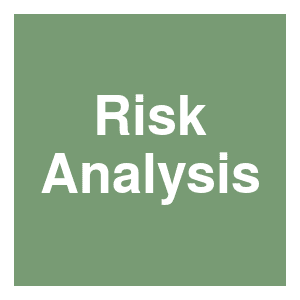
|
General science-technology orientation, specific benefit–risk assessment frame, and public acceptance of gene drive biotechnologyX. Liu, C. L. Goldsmith, K. E. Kang, A. Vedlitz, Z. N. Adelman, L. W. Buchman, E. Heitman and R. F. Medina, Risk Analysis, 2023.
Abstract With limited understanding of most new biotechnologies, how do citizens form their opinion and what factors influence their attitudes about these innovations? In this study, we use gene drive biotechnology in agricultural pest management as an example and theoretically ... Keywords: assessment, drosophila, gene drive synthetic, hybridization, risk, suzukii |

|
Benefits and risks of gene drives for invasive plant management – the case for common tansyL. Croghan, A. G. Smith, M. A. Tancos, N. O. Anderson and R. L. Becker, Frontiers in Agronomy, 5. 2023.
Invasive plants cause significant environmental and economic damage, but land managers have few control options. Common tansy (Tanacetum vulgare) is prevalent in many US states and is one of the most reported invasive plants in Minnesota. Controlling common tansy poses a ... Keywords: assessment, drosophila, gene drive synthetic, hybridization, risk, suzukii |

|
Engineered and natural gene drives: mechanistically the same, yet not same in kindR. F. Medina and J. Kuzma, Nature Communications, 14:5994. 2023.
We propose the use of the terms natural gene drive (NGD) and engineered gene drive (EGD) arguing against James et al.1, who think both should be included within the term “gene drive”, based on their mechanistic similarities. Thanks to CRISPR-Cas-based gene editing, engineered ... Keywords: assessment, drosophila, gene drive synthetic, hybridization, risk, suzukii |

|
Proposed Changes to the NIH Guidelines for Research Involving Recombinant or Synthetic Nucleic Acid Molecules (NIH Guidelines)National Institutes of Health, Federal Register, 2023.
The National Institutes of Health (NIH) seeks input on a proposal to revise the NIH Guidelines for Research Involving Recombinant or Synthetic Nucleic Acid Molecules (NIH Guidelines) to include specific considerations and requirements for conducting research involving gene drive ... Keywords: assessment, drosophila, gene drive synthetic, hybridization, risk, suzukii |

|
Routes of Introduction of Anopheles gambiae Into Remote Islands in the Indian OceanR. E. Ditter, M. Campos, M. W. Crepeau, J. Pinto, A. Toilibou, Y. Amina, Y. Lee, A. J. Cornel and G. C. Lanzaro, , 2023.
The malaria vector Anopheles gambiae s.s., is a primary malaria vector throughout sub-Saharan Africa including the islands of the Comoros archipelago (Anjouan, Grande Comore, Mayotte and Mohéli). These islands are located at the northern end of the Mozambique Channel in eastern ... Keywords: assessment, drosophila, gene drive synthetic, hybridization, risk, suzukii |

|
Defining transformation events for gene drive in species complexesJ. B. Connolly, IOBC-WPRS Bulletin, 163:8-20. 2023.
Engineered gene drives (EGDs) that allow the super-Mendelian inheritance of genetic traits could one day be used to reduce the vectorial capacity of Anopheles species that transmit human malaria in Africa. Many Anopheles species belong to complexes of closely related sibling ... Keywords: assessment, drosophila, gene drive synthetic, hybridization, risk, suzukii |
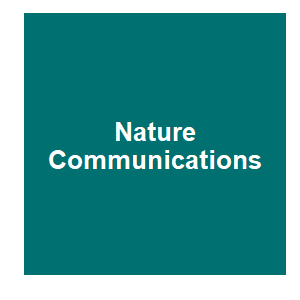
|
A gene drive is a gene drive: the debate over lumping or splitting definitionsS. L. James, D. A. O'Brochta, F. Randazzo and O. Akbari, Nature Communications, 2023.
Gene drive technologies are being considered as a new approach to address a variety of currently intractable global problems, including to prevent disease transmission, reduce crop loss, and preserve biodiversity1. There are some outside the genetics research community who argue ... Keywords: assessment, drosophila, gene drive synthetic, hybridization, risk, suzukii |
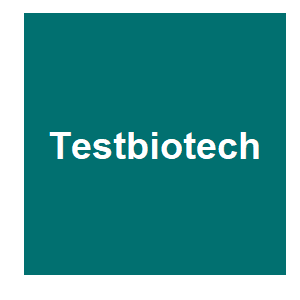
|
Gene Drives: Target Malaria is underestimating the risksC. Then, Testbiotech, 2023.
The Target Malaria consortium has for several years been planning to conduct field trials using genetically engineered mosquitoes in Burkina Faso. The aim is to transfer artificial gene constructs, i. e. the so-called ‘X-shredder’, into wild populations of the mosquitoes. ... Keywords: assessment, drosophila, gene drive synthetic, hybridization, risk, suzukii |

|
Assessing the hybridization potential between a hypothetical gene drive-modified Drosophila suzukii strain and non-target Drosophila speciesJ. Romeis, S. Wolf, J. Collatz, J. Enkerli and F. Widmer, IOBC-WPRS Bulletin, 163:108. 2023.
Genetically engineered gene drives (GD) are a potentially powerful tool to control pest insects by population suppression or even elimination. Before living GD modified insects can be released into the environment, they must pass an environmental risk assessment (ERA). A key ... Keywords: assessment, drosophila, gene drive synthetic, hybridization, risk, suzukii |

|
Engagement on risk assessment for gene drive mosquitoes by EFSA and Target MalariaS. Hartley, A. Kokotovich, Y. Devos and J. Mumford, Environmental Science and Policy, 142:183-193. 2023.
As engineered gene drive technologies continue to advance, many actors are actively considering how environmental risk assessments (RAs) for gene drive organisms should be conducted, and how stakeholder engagement opportunities should be provided. There is, however, a lack of ... Keywords: assessment, drosophila, gene drive synthetic, hybridization, risk, suzukii |

|
Environmental, Socio-economic, and Health Impact Assessment (ESHIA) for Gene Drive Organismsisaaa Inc. and Outreach Network for Gene Drive Research, ISAAA, 2023.
Understanding the possible positive and negative impacts that gene drive organisms could have on the environment and people is essential before these technologies are considered for release, whether for research purposes or for use. Different impacts are assessed through ... Keywords: assessment, drosophila, gene drive synthetic, hybridization, risk, suzukii |
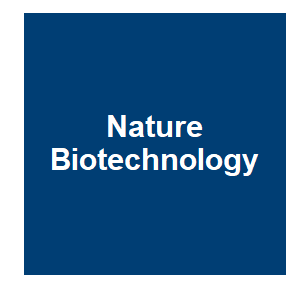
|
Exploring the value of a global gene drive project registryR. I. Taitingfong, C. Triplett, V. N. Vásquez, R. M. Rajagopalan, R. Raban, A. Roberts, G. Terradas, B. Baumgartner, C. Emerson, F. Gould, F. Okumu, C. E. Schairer, H. C. Bossin, L. Buchman, K. J. Campbell, A. Clark, J. Delborne, K. Esvelt, J. Fisher, R., Nature Biotechnology, 2022.
Recent calls to establish a global project registry before releasing any gene-drive-modified organisms (GDOs) have suggested a registry could be valuable to coordinate research, collect data to monitor and evaluate potential ecological impacts, and facilitate transparent ... Keywords: assessment, drosophila, gene drive synthetic, hybridization, risk, suzukii |

|
Experts urge caution over biotech that can wipe out insect pestsL. Fauvel, Phys Org, 2022.
Dozens of scientists, experts and campaigners called for a ban on the release of genetically-edited organisms into the wild, in a statement Friday warning of potentially severe risks to the world's pollinators. The appeal was launched at crunch biodiversity talks in Montreal, ... Keywords: assessment, drosophila, gene drive synthetic, hybridization, risk, suzukii |

|
Bioinformatic and literature assessment of toxicity and allergenicity of a CRISPR-Cas9 engineered gene drive to control the human malaria mosquito vector Anopheles gambiaeA. Qureshi and J. B. Connolly, Malaria Journal, 2022.
Population suppression gene drive is currently being evaluated, including via environmental risk assessment (ERA), for malaria vector control. One such gene drive involves the dsxFCRISPRh transgene encoding (i) hCas9 endonuclease, (i) T1 guide RNA (gRNA) targeting the doublesex ... Keywords: assessment, drosophila, gene drive synthetic, hybridization, risk, suzukii |
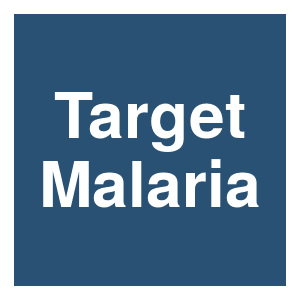
|
East African policy dialogue on research of genetically modified mosquitoes for malaria control and eliminationC. Mugoya, Target Malaria, 2022.
The East African Community Secretariat, in collaboration with the East African Health Research Commission; NEPAD, AFIDEP and IFAKARA Health Institute recently convened an East African regional dialogue in Dar es salaam, Tanzania from 17-19 November 2022 to deliberate the way ... Keywords: assessment, drosophila, gene drive synthetic, hybridization, risk, suzukii |

|
No Environmental Release of Gene Drive OrganismsAnonymous, STOP GENE DRIVES, 2022.
We urge governments to prevent the environmental release of gene drive organisms and to establish a global moratorium on the release of gene drive organisms at the UN Convention on Biological Diversity (CBD). Gene drives work against natural rules of inheritance forcing nearly ... Keywords: assessment, drosophila, gene drive synthetic, hybridization, risk, suzukii |

|
WORLDWIDE: EXPERTS ON GENE DRIVESStop Gene Drive, STOP GENE DRIVES, 2022.
We are travelling the world speaking to some of the world’s leading thinkers, activists and academics on the impact of gene drives. We interviewed more than 20 experts from around the world Keywords: assessment, drosophila, gene drive synthetic, hybridization, risk, suzukii |

|
What are gene drivers and why do 300,000 people want them banned?Anika, Social Bites, 2022.
Ecologists in Action and Madrid Agroecologico submitted 300,000 citizen signatures to the Ministry of Ecological Transition and Demographic Challenge, asking Minister Teresa Ribera to give Spain a boost. International moratorium on technology for the release of organisms modified ... Keywords: assessment, drosophila, gene drive synthetic, hybridization, risk, suzukii |

|
ISAAA Policy Brief: Risk Assessment for Gene Drive OrganismsAnonymous, ISAAA, 2022.
Gene drive is a genetic phenomenon that occurs in nature and causes a selected trait to spread rapidly through a species via sexual reproduction over generations, potentially becoming increasingly common within a specific species. Gene drive systems are being developed in the ... Keywords: assessment, drosophila, gene drive synthetic, hybridization, risk, suzukii |
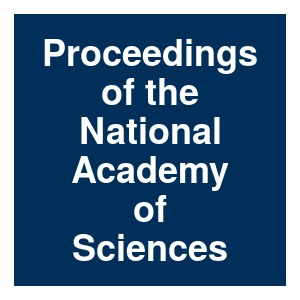
|
Natural selfish genetic elements should not be defined as gene drivesM. A. Wells and R. A. Steinbrecher, Proceedings of the National Academy of Sciences, 119:e2201142119. 2022.
Gene drives are increasingly discussed in the political realm,and how the term is defined therefore has important impli-cations. The opinion piece from Alphey et al. (1) identifies alack of consensus on the definition and makes explicitchanges in how the terminology is being used ... Keywords: assessment, drosophila, gene drive synthetic, hybridization, risk, suzukii |

|
What do we mean by “Target Organism” in Target Malaria’s gene drive research?J. B. Connolly, Target Malaria, 2022.
In the wild and in laboratory settings, sibling mosquito species can successfully mate to produce viable offspring, regardless of whether they are vectors or not. Importantly, females, but not males, of these offspring can be fertile. Nonetheless, the likelihood of finding such ... Keywords: assessment, drosophila, gene drive synthetic, hybridization, risk, suzukii |

|
Public deliberation and the regulation of gene drive in the USAW. F. West, L. W. Buchman and R. F. Medina, Science and Public Policy, scac032. 2022.
Gene drive is a new form of biotechnology designed to bias the inheritance of selected traits in animal or plant species that reproduce sexually and have relatively short reproductive cycles. Unlike traditional breeding techniques and other forms of biotechnology, gene drive is ... Keywords: assessment, drosophila, gene drive synthetic, hybridization, risk, suzukii |

|
Who decides whether to use gene drives against malaria-carrying mosquitoes?T. H. Saey, ScienceNews, 2022.
The gene drive interferes with the insects’ ability to reproduce. It wiped out captive populations of mosquitoes in eight to 12 generations (SN: 10/27/18, p. 6) in a small lab study. In 2021, the technology worked in the large cages in Terni, Italy, too. Within as little as ... Keywords: assessment, drosophila, gene drive synthetic, hybridization, risk, suzukii |

|
Recommendations for environmental risk assessment of gene drive applications for malaria vector controlJ. B. Connolly, J. D. Mumford, D. C. M. Glandorf, S. Hartley, O. T. Lewis, S. W. Evans, G. Turner, C. Beech, N. Sykes, M. B. Coulibaly, J. Romeis, J. L. Teem, W. Tonui, B. Lovett, A. Mankad, A. Mnzava, S. Fuchs, T. D. Hackett, W. G. Landis, J. M. Marshall, Malar J, 21:152. 2022.
Building on an exercise that identified potential harms from simulated investigational releases of a population suppression gene drive for malaria vector control, a series of online workshops identified nine recommendations to advance future environmental risk assessment of gene ... Keywords: assessment, drosophila, gene drive synthetic, hybridization, risk, suzukii |

|
Self-Deleting Genes Could Control Mosquitoes And Prevent Vector-Borne DiseasesA. Russell, Texas AM TODAY, 2022.
Texas A&M AgriLife Research scientists are testing a technology to make temporary genetic modifications in mosquitoes that self-delete over time. The mechanism to make temporary genetic changes could be important for scientists hoping to modify mosquitoes in ways that help manage ... Keywords: assessment, drosophila, gene drive synthetic, hybridization, risk, suzukii |

|
Self-eliminating Genes Tested on Disease-carrying MosquitoesM. Taylor, Laboratory Equipment, 2022.
There’s good reason why CRISPR-Cas9 gene editing is not allowed at the germline. While international commissions are working hard to make this a possibility, potential unknown effects further down the ancestry line raise concerns about the process. The insect equivalent of ... Keywords: assessment, drosophila, gene drive synthetic, hybridization, risk, suzukii |

|
Self-eliminating genes tested on mosquitoesA. Russell, AGRILIFE Today, 2022.
Texas A&M AgriLife Research scientists have tested a technology to make temporary genetic modifications in mosquitoes. The modifications self-delete over time. Texas A&M AgriLife Research scientists published an article detailing a mechanism to make temporary genetic alterations ... Keywords: assessment, drosophila, gene drive synthetic, hybridization, risk, suzukii |

|
UC Davis — Malaria Gene Drive Feasibility AnalysisGood Ventures, Good Ventures, 2022.
Open Philanthropy recommended a grant of $10,248,967 over three years to UC Davis to support subsequent stages of a feasibility analysis of a potential test of gene drives for malaria control on the adjoining West African islands of São Tomé and Príncipe. The work, led by Dr. ... Keywords: assessment, drosophila, gene drive synthetic, hybridization, risk, suzukii |

|
UC San Diego Biology Lab Receives $1.4M Grant to Fight Malaria SpreadE. Dameron, UC San Diego News Center, 2022.
Scientists at the University of California San Diego are hard at work on new genetic technologies intended for use in curbing mosquito populations, fighting the spread of malaria and mitigating the hazards associated with the deployment of gene-editing systems in the wild. That ... Keywords: assessment, drosophila, gene drive synthetic, hybridization, risk, suzukii |

|
The power of gene editingThe Economist, The Economist, 2022.
Technologies such as genetic modification and ‘CRISPR’ will cure hereditary diseases, produce disease-resistant crops and enable the breeding of malaria-free mosquitos. But advances bring ethical and practical dilemmas. Genetically modified food is banned in the EU, and ... Keywords: assessment, drosophila, gene drive synthetic, hybridization, risk, suzukii |
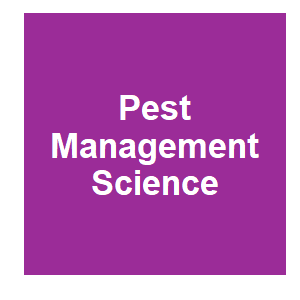
|
Could species-focused suppression of Aedes aegypti, the yellow fever mosquito, and Aedes albopictus, the tiger mosquito, affect interacting predators? An evidence synthesis from the literatureJ. A. S. Bonds, C. M. Collins and L.-C. Gouagna, Pest Management Science, 2022.
The risks of Aedes aegypti and Aedes albopictus nuisance and vector-borne diseases are rising and the adverse effects of broad-spectrum insecticide application has promoted species-specific techniques, such as sterile insect technique (SIT) and other genetic strategies, as ... Keywords: assessment, drosophila, gene drive synthetic, hybridization, risk, suzukii |

|
Rescue by gene swamping as a gene drive deployment strategyK. D. Harris and G. Greenbaum, bioRxiv, 2022.03.08.483503. 2022.
Gene drives are genetic constructs that can spread deleterious alleles with potential application to population suppression of harmful species. Given that a gene drive can potentially spill over to other populations or even other species, control measures and fail-safes ... Keywords: assessment, drosophila, gene drive synthetic, hybridization, risk, suzukii |
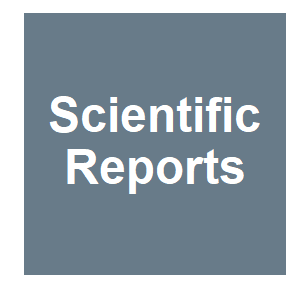
|
Adult mosquito predation and potential impact on the sterile insect techniqueN. S. Bimbilé Somda, H. Maïga, W. Mamai, T. Bakhoum, T. Wallner, S. B. Poda, H. Yamada and J. Bouyer, Scientific Reports, 12:2561. 2022.
The sterile insect technique is a promising environmentally friendly method for mosquito control. This technique involves releasing laboratory-produced sterile males into a target field site, and its effectiveness may be affected by the extent of adult mosquito predation. Sterile ... Keywords: assessment, drosophila, gene drive synthetic, hybridization, risk, suzukii |

|
Conditions for Investment in Genetic Biocontrol of Pest Vertebrates in AustraliaL. Carter, A. Mankad, S. Campbell, W. Ruscoe, K. P. Oh, P. R. Brown, M. Byrne, M. Tizard and T. Strive, Frontiers in Agronomy, 3. 2022.
Managing pest vertebrate species in Australia is a significant challenge for government, industry, research sectors and land-managers. Innovative tools such as genetic biocontrol offers decision-makers a potentially effective means of reducing the impact of pest species ... Keywords: assessment, drosophila, gene drive synthetic, hybridization, risk, suzukii |

|
IMPACTOS AMBIENTAIS DA TÉCNICA DE GENE DRIVE PARA O CONTROLE DE EPIDEMIAS: ALCANCES E LIMITES DO PRINCÍPIO DA PRECAUÇÃON. R. Furtado, PERI Revista de Filosofia, 13. 2022.
The paper discusses the application of the precautionary principle in the management of environmental risks arising from the use of gene drives to control epidemics. Gene drives consist of a technique for creating genetically modified organisms, which are released into an ... Keywords: assessment, drosophila, gene drive synthetic, hybridization, risk, suzukii |
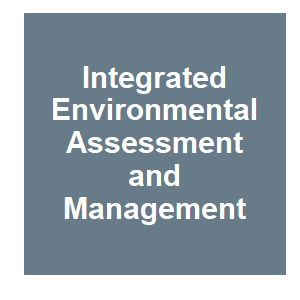
|
Insect Allies – Assessment of a Viral Approach to Plant Genome EditingK. Pfeifer, J. L. Frieß and B. Giese, Integrated Environmental Assessment and Management, 2022.
The DARPA program Insect Allies has already sparked scientific debate concerning technology assessment-related issues, among which the most prevalent is that of dual use potential. As apart from the issues concerning peaceful applications, the technology also provides the ... Keywords: assessment, drosophila, gene drive synthetic, hybridization, risk, suzukii |

|
iGEM and Gene Drives: A Case Study for GovernanceP. Millett, T. Alexanian, M. J. Palmer, S. W. Evans, T. Kuiken and K. Oye, Health Security, 2022.
Gene drives have already challenged governance systems. In this case study, we explore the International Genetically Engineered Machine (iGEM) competition's experiences in gene drive-related research and lessons in developing, revising, and implementing a governance system. ... Keywords: assessment, drosophila, gene drive synthetic, hybridization, risk, suzukii |

|
The Need for a Tiered Registry for US Gene Drive GovernanceK. L. Warmbrod, A. L. Kobokovich, R. West, G. K. Gronvall and M. Montague, Health Security, 2022.
A great deal of attention has been focused on the potential risks of gene drives, the kinds of biosafety protections they may require, and how they may be reversed; however, less attention has been paid to the systems that would be useful to have in place in the future, when ... Keywords: assessment, drosophila, gene drive synthetic, hybridization, risk, suzukii |
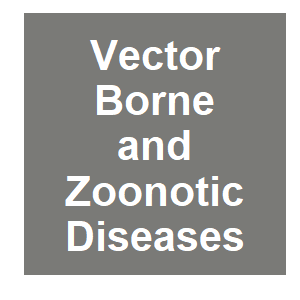
|
An Introduction to Containment Recommendations for Gene Drive Mosquitoes and the Laboratory Rearing of Genetically Engineered Mosquitoes in AfricaS. Higgs, Vector-Borne and Zoonotic Diseases, 2022.
The prospect of using genetically engineered arthropods to reduce the incidence of vector-borne diseases either indirectly by suppressing vector populations or directly by replacing wild-type vector species with less competent ones has long been discussed; however, only in the ... Keywords: assessment, drosophila, gene drive synthetic, hybridization, risk, suzukii |

|
Stakeholder Views on Engagement, Trust, Performance, and Risk Considerations About Use of Gene Drive Technology in Agricultural Pest ManagementC. L. Goldsmith, K. E. Kang, E. Heitman, Z. N. Adelman, L. W. Buchman, D. Kerns, X. Liu, R. F. Medina and A. Vedlitz, Health Security, 2021.
Gene drive is an experimental technique that may make it possible to alter the genetic traits of whole populations of a species through the genetic modification of a relatively small number of individuals. This technology is sufficiently new that literature on the understanding ... Keywords: assessment, drosophila, gene drive synthetic, hybridization, risk, suzukii |

|
Facilitating the Conversation: Gene Drive ClassificationJ. Overcash and A. Golnar, Health Security, 2021.
Gene drives are an emerging technology with tremendous potential to impact public health, agriculture, and conservation. While gene drives can be described simply as selfish genetic elements (natural or engineered) that are inherited at non-Mendelian rates, upon closer ... Keywords: assessment, drosophila, gene drive synthetic, hybridization, risk, suzukii |
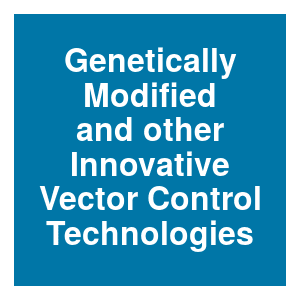
|
Laboratory Biosafety in Handling Genetically Modified MosquitoesJ. Charles, Genetically Modified and other Innovative Vector Control Technologies, 2021.
One of the novel approaches in controlling vector-borne diseases is to release genetically modified mosquitoes in nature. Trial studies are done in different phases by the researches, both in the laboratory and in the fields. Before a GM mosquito is validated to be ready for ... Keywords: assessment, drosophila, gene drive synthetic, hybridization, risk, suzukii |

|
Safety Assessment of Novel Genetic Technologies for Vector Control: National and International PerspectivesV. Ahuja, Genetically Modified and other Innovative Vector Control Technologies, 2021.
Novel genetic technologies provide an alternative approach for control of vectors particularly those carrying deadly pathogens. Genetic control technologies aim to either suppress target populations or modify the vector by introducing a heritable factor that reduces or blocks ... Keywords: assessment, drosophila, gene drive synthetic, hybridization, risk, suzukii |

|
Measuring Public Attitudes to Releases of Transgenic Mosquitoes for Disease Control, with Special Reference to Dengue and MalariaL. A. De Las Llagas and M. S. T. Gunigundo, Genetically Modified and other Innovative Vector Control Technologies, 2021.
Since the advent of DDT in public health and agriculture, science leaped forward with revolutionary technology such as gene drive or editing, thus making it possible to develop alternative approaches to address vector-borne diseases. However, their utilization and sustenance in ... Keywords: assessment, drosophila, gene drive synthetic, hybridization, risk, suzukii |

|
Arthropods of Medical Importance: Need for Genetic and Other Innovative Vector Control Technologies, with Emphasis on Eco-biosocial and Environmental Considerations.B. K. Tyagi, Genetically Modified and other Innovative Vector Control Technologies, 2021.
Among the world’s known vector groups, viz. arthropods, snails and rodents, the most important vectors originate from arthropods, the jointed legs. Arthropods are doubtlessly regarded as the most dominant creatures on the Earth due largely to their remarkable structural and ... Keywords: assessment, drosophila, gene drive synthetic, hybridization, risk, suzukii |

|
Genetically Modified and other Innovative Vector Control TechnologiesB. K. Tyagi, SpringerLink, 2021.
This book comprehensively covers the latest development in developing and deploying the genetically modified vectors, particularly Anopheles and Aedes mosquitoes responsible for transmitting malaria parasites and dengue viruses, the most deadly and/or debilitating among all the ... Keywords: assessment, drosophila, gene drive synthetic, hybridization, risk, suzukii |

|
Safe Application of Genetically Modified Mosquito (GMM) to Combat Dengue and Chikungunya Depends on Socioeconomic Status and Social Acceptance in the Developing Countries: A Comprehensive AnalysisM. N. Islam, Genetically Modified and other Innovative Vector Control Technologies, 2021.
The emerging and re-emerging vector-borne diseases are a serious public health problem throughout the world. It has been observed that more than 100 countries and approximately half of the world’s population are at risk on vector-borne diseases (VBDs). The global burden of the ... Keywords: assessment, drosophila, gene drive synthetic, hybridization, risk, suzukii |
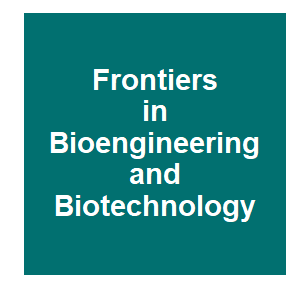
|
The Potential for a Released Autosomal X-Shredder Becoming a Driving-Y Chromosome and Invasively Suppressing Wild Populations of Malaria MosquitoesY. Alcalay, S. Fuchs, R. Galizi, F. Bernardini, R. E. Haghighat-Khah, D. B. Rusch, J. R. Adrion, M. W. Hahn, P. Tortosa, R. Rotenberry and P. A. Papathanos, Frontiers in Bioengineering and Biotechnology, 9. 2021.
Sex-ratio distorters based on X-chromosome shredding are more efficient than sterile male releases for population suppression. X-shredding is a form of sex distortion that skews spermatogenesis of XY males towards the preferential transmission of Y-bearing gametes, resulting in a ... Keywords: assessment, drosophila, gene drive synthetic, hybridization, risk, suzukii |
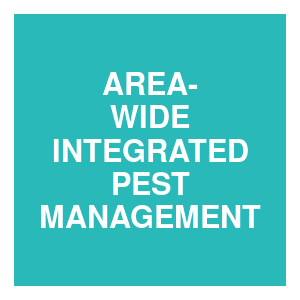
|
New molecular genetic techniques: regulatory and societal considerationsNielsen, K. M., AREA-WIDE INTEGRATED PEST MANAGEMENT: Development and Field Application, 2021.
A rapidly expanding toolbox of techniques available for genome editing provides the basis for a new continuum in types of modifications that can be introduced into a genome and blur the bimodal GMO vs. non-GMO (genetically modified organism) divide. Site-directed nucleases (SDN) ... Keywords: assessment, drosophila, gene drive synthetic, hybridization, risk, suzukii |

|
Genome editing and its applications for insect pest control: Curse or blessing?Hacker, I. , and Schetelig, M. F, AREA-WIDE INTEGRATED PEST MANAGEMENT: Development and Field Application, 2021.
Gene and genome editing are described as cutting-edge research tools with the potential to tackle urgent global challenges in the management of agricultural pests and human disease vectors such as mosquitoes. The field is defined by the chances and challenges to interlink the ... Keywords: assessment, drosophila, gene drive synthetic, hybridization, risk, suzukii |

|
Gene drives in malaria control: what we need to knowR. Mudziwapasi, M. C. Changara, A. Ndudzo, T. Kaseke, F. Godobo, F. L. Mtemeli, R. Shoko, F. Songwe, S. Ndlovu and S. Sandra Mlambo, Biotechnology and Biotechnological Equipment, 35:1623-1631. 2021.
Gene drives are being used to enhance a DNA sequence?s likelihood of passing between generations via sexual reproduction. Gene drives can be deployed to manipulate natural populations. They can be used to suppress populations by reducing the number of individuals in a population ... Keywords: assessment, drosophila, gene drive synthetic, hybridization, risk, suzukii |

|
Genome Editing Tools and Gene Drives: A Brief Overview (1st ed.).R. Mudziwapasi, R. Chekera, C. Z. Ncube, I. Shoko, B. Ncube, T. Moyo, J. G. Chimbo, J. Dube, F. F. Mashiri, M. A. Mubani, D. Maruta, C. Chimbo, M. Masuku, R. Shoko, R. P. Nyamusamba and F. N. Jomane, CRC Press, 2021.
Genome-editing methods are becoming routine tools for molecular and cell biologists. Such tools include ZFNs, CRISPR, megaTALs and TALENs. These tools are revolutionizing the creation of precisely manipulated genomes to modify the characteristics of organisms or cells. ... Keywords: assessment, drosophila, gene drive synthetic, hybridization, risk, suzukii |
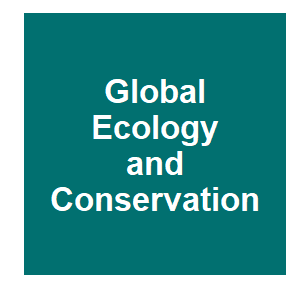
|
Ecological vulnerability analysis for suppression of Drosophila suzukii by gene drivesC. R. Lalyer, L. Sigsgaard and B. Giese, Global Ecology and Conservation, 32:e01883. 2021.
Synthetic gene drives are transgenic constructs that aim to bias heredity and thereby influence the characteristics and fate of populations regarding abundance and evolution. Aside from irreversible effects in ecosystems that could be triggered by the release of a gene drive, ... Keywords: assessment, drosophila, gene drive synthetic, hybridization, risk, suzukii |
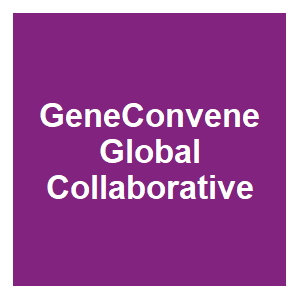
|
Decision and Analysis Tools for Complex ProblemsHector Quemada and David O'Brochta, GeneConvene Global Collaborative, 2021.
The challenges associated with the multiple phases of testing and possible deployment of gene drive-containing organisms appear to have similarities to those associated with various aspects of invasive species management. Preventing unwanted spread of the target species as well ... Keywords: assessment, drosophila, gene drive synthetic, hybridization, risk, suzukii |

|
Environment Agency Austria, EPA Network, 2021.
Gene drive applications are likely to entail considerable ethical and ecological implications. Apart from societal issues, they pose challenges for environmental risk assessment (ERA), monitoring and risk management: 1)GDOs differ fundamentally from classical GMOs. Notably, GDOs ... Keywords: assessment, drosophila, gene drive synthetic, hybridization, risk, suzukii |

|
Calling the latest gene technologies ‘natural’ is a semantic distraction — they must still be regulatedJ. A. Heinemann, D. J. Paull, S. Walker and B. Kurenbach, The Conversation, 2021.
Legislators around the world are being asked to reconsider how to regulate the latest developments in gene technology, genome editing and gene silencing. Both the European Court of Justice and the New Zealand High Court have ruled that genome editing techniques should remain ... Keywords: assessment, drosophila, gene drive synthetic, hybridization, risk, suzukii |

|
New report demands moratorium on gene drivesGM Watch, GM Watch, 2021.
To help the public understand what's at stake, the Germany-based NGO Save Our Seeds (SOS) has published a report, "Gene Drives: The New Dimension of Genetic Engineering", which can be downloaded as a pdf document. The report provides a scientifically founded overview of how ... Keywords: assessment, drosophila, gene drive synthetic, hybridization, risk, suzukii |

|
Gene Drive Organisms: A new dimension of genetic engineeringV. Henn and M. Imken, Save Our Seeds, 2021.
Enabled by new genetic engineering techniques such as CRISPR/Cas9, so-called gene drives have been developed in recent years that enable humans to spread new genes throughout the genome of wild animal populations. Gene drives force the inheritance of newly introduced genes to be ... Keywords: assessment, drosophila, gene drive synthetic, hybridization, risk, suzukii |
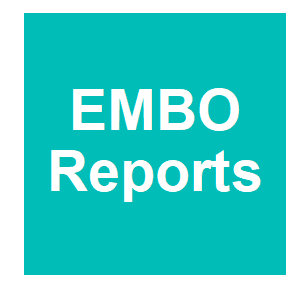
|
The viral eraB. Giese, EMBO reports, 22:e53229. 2021.
New biotechnologies such as gene drives and engineered viruses herald a viral era that would give humans exceptional power over any organism at the level of the genotype. In synthetic biology, orthogonality—in the sense of lack of interference—between different systems or ... Keywords: assessment, drosophila, gene drive synthetic, hybridization, risk, suzukii |

|
The international governance of gene drive organismsF. Rabitz, Environmental Politics, 2021.
Gene Drive Organisms (GDOs) are a proposed biotechnological intervention that might generate significant benefits for the conservation and sustainable use of biological diversity while also raising critical biosafety issues. Despite their inevitable transboundary effects, their ... Keywords: assessment, drosophila, gene drive synthetic, hybridization, risk, suzukii |

|
Gene Drives – Engineering the WildL. Sharratt, Sentinel, 2021.
So far, genetically engineered organisms have been mostly limited to agricultural use, with partial success. Around the world, a few major crops (mostly corn, soy, and cotton) are genetically engineered, predominantly for herbicide tolerance and insect resistance. However, the ... Keywords: assessment, drosophila, gene drive synthetic, hybridization, risk, suzukii |
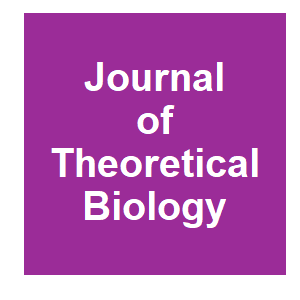
|
Autocatalytic-protection for an unknown locus CRISPR-Cas countermeasure for undesired mutagenic chain reactionsE. Schonfeld, E. Schonfeld and D. Schonfeld, Journal of Theoretical Biology, 528:110831. 2021.
The mutagenic chain reaction (MCR) is a genetic tool to use a CRISPR–Cas construct to introduce a homing endonuclease, allowing gene drive to influence whole populations in a minimal number of generations (Esvelt et al., 2014, Gantz and Bier, 2015, Gantz and Bier, 2016). The ... Keywords: assessment, drosophila, gene drive synthetic, hybridization, risk, suzukii |

|
Earth system interventions as technologies of the AnthropoceneJ. L. Reynolds, Environmental Innovation and Societal Transitions, 40:132-146. 2021.
Earth system interventions (ESIs)—intentional large-scale interventions in Earth systems—are not entirely new. However, in response to threats to sustainability, particularly from climate change and biodiversity loss, some scientists and others are researching, developing, ... Keywords: assessment, drosophila, gene drive synthetic, hybridization, risk, suzukii |

|
Africa Turning to Gene Drive Technology for Malaria EliminationM. Hearty, Science Africa, 2021.
With Africa accounting for nine out of ten malaria cases globally, the continent is turning to gene drive technology to control the disease. This is according to a decision made by African leaders at the 29th Summit of Heads of States and Governments of the African Union held in ... Keywords: assessment, drosophila, gene drive synthetic, hybridization, risk, suzukii |

|
West African countries working together to develop framework to regulate genetically engineered mosquitos: Target MalariaAnonymous, Global News, 2021.
Abdoulaye Diabaté, principal investigator for Target Malaria, says West African countries like Burkina Faso, Mali and Benin are working with the New Partnership for Africa’s Development (NEPAD) to develop a pan-West African framework to regulate gene drive mosquitos. Keywords: assessment, drosophila, gene drive synthetic, hybridization, risk, suzukii |

|
‘Nigeria has capacity for safe application of modern biotechnology’M. Adewale, The Guardian, 2021.
Director-general of the National Biosafety Management Agency (NBMA), Dr. Rufus Ebegba, has declared that Nigeria has the capacity to deploy safe biotechnology products for agricultural development and environmental safety. Ebegba, who gave the assurance at the opening of a ... Keywords: assessment, drosophila, gene drive synthetic, hybridization, risk, suzukii |

|
European Parliament calls for ban on gene drive technologySave Our Seeds, Save Our Seeds, 2021.
The European Parliament yesterday confirmedi it‘s precautionary stance towards the use of a new genetic engineering technology called gene drive. In its report on the EU’s Biodiversity Strategy for 2030, adopted at the European Parliament’s plenary on 08.06.2021, ... Keywords: assessment, drosophila, gene drive synthetic, hybridization, risk, suzukii |

|
Analysis of off-target effects in CRISPR-based gene drives in the human malaria mosquitoW. T. Garrood, N. Kranjc, K. Petri, D. Y. Kim, J. A. Guo, A. M. Hammond, I. Morianou, V. Pattanayak, J. K. Joung, A. Crisanti and A. Simoni, Proceedings of the National Academy of Sciences, 118:e2004838117. 2021.
CRISPR-Cas9 nuclease-based gene drives have been developed toward the aim of control of the human malaria vector Anopheles gambiae. Gene drives are based on an active source of Cas9 nuclease in the germline that promotes super-Mendelian inheritance of the transgene by ... Keywords: assessment, drosophila, gene drive synthetic, hybridization, risk, suzukii |
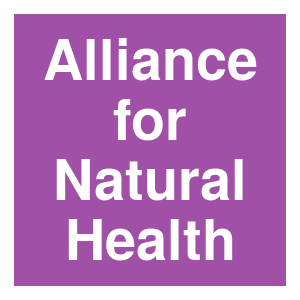
|
Driving genetic destructionAnonymous, Alliance for Natural Health, 2021.
Genetically-engineered (GE) mosquitoes have been released in a number of countries, including the US. We’ve known for some time that these experiments have not gone to plan, but a new paper provides a better understanding of how they’ve went awry, and provides a harrowing ... Keywords: assessment, drosophila, gene drive synthetic, hybridization, risk, suzukii |
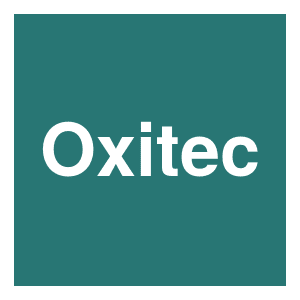
|
Oxitec Receives Landmark Biosafety Approval for New Fall Armyworm Control SolutionOxitec, Oxitec, 2021.
Approval of Oxitec’s Friendly™ fall armyworm technology by the Brazilian government’s regulatory agency CTNBio confirms that it is safe for people, animals and the environment. Oxitec’s Friendly™ fall armyworm is a new, safe, and sustainable solution to one of the ... Keywords: assessment, drosophila, gene drive synthetic, hybridization, risk, suzukii |
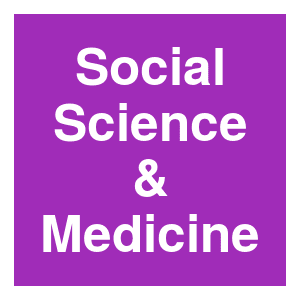
|
Experimenting with co-development: a qualitative study of gene drive research for malaria control in MaliS. Hartley, K. Ledingham, R. Owen, S. Leonelli, S. Diarra and S. Diop, Social Science and Medicine, 2021.
Our findings suggest co-development is opening up previously expert-dominated spaces as researchers attempt to take responsibility for the societal implications of their work. However, its main function is as a project management tool to enable and instrumentally support ... Keywords: assessment, drosophila, gene drive synthetic, hybridization, risk, suzukii |

|
Differentiated impacts of human interventions on nature: Scaling the conversation on regulation of gene technologiesJ. A. Heinemann, D. J. Paull, S. Walker and B. Kurenbach, Elementa: Science of the Anthropocene, 9. 2021.
Biotechnology describes a range of human activities in medicine, agriculture, and environmental management. One biotechnology in particular, gene technology, continues to evolve both in capacity and potential to benefit and harm society. The purpose of this article is to offer a ... Keywords: assessment, drosophila, gene drive synthetic, hybridization, risk, suzukii |

|
Population genomics of invasive rodents on islands: Genetic consequences of colonization and prospects for localized synthetic gene driveK. P. Oh, A. B. Shiels, L. Shiels, D. V. Blondel, K. J. Campbell, J. R. Saah, A. L. Lloyd, P. Q. Thomas, F. Gould, Z. Abdo, J. R. Godwin and A. J. Piaggio, Evolutionary Applications, 2021.
Here we used pooled whole-genome sequencing of invasive mouse (Mus musculus) populations on four islands along with paired putative source populations to test genetic predictions of island colonization and characterize locally fixed Cas9 genomic targets. Patterns of variation ... Keywords: assessment, drosophila, gene drive synthetic, hybridization, risk, suzukii |

|
Emergent challenges for CRISPR: biosafety, biosecurity, patenting, and regulatory issuesBraddick, D. , and Ramarohetra, R. F., Genome Engineering Via Crispr-Cas9 System, 2021.
The recent advancements of CRISPR-Cas technologies have transformed this simple and efficient gene editing technique into an extraordinarily powerful tool. The most anticipated applications could create novel therapeutics against mankind's most serious afflictions and help ... Keywords: assessment, drosophila, gene drive synthetic, hybridization, risk, suzukii |

|
Scientifically framed gene drive communication perceived as credible but riskierE. A. MacDonald, E. D. Edwards, J. Balanovic and F. Medvecky, People and Nature, 2021.
Framing is a communication technique in which certain beliefs or values are emphasized that resonate with the target audience. Framing may increase how much people objectively think about new information and update their opinions; framing may mitigate emo Keywords: assessment, drosophila, gene drive synthetic, hybridization, risk, suzukii |
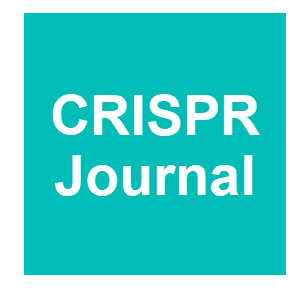
|
A Code of Ethics for Gene Drive ResearchG. J. Annas, C. L. Beisel, K. Clement, A. Crisanti, S. Francis, M. Galardini, R. Galizi, J. Grünewald, G. Immobile, A. S. Khalil, R. Müller, V. Pattanayak, K. Petri, L. Paul, L. Pinello, A. Simoni, C. Taxiarchi and J. K. Joung, The CRISPR Journal, 2021.
A code of ethics can be a useful tool for all parties involved in the development and regulation of gene drives and can be used to help ensure that a balanced analysis of risks, benefits, and values is taken into consideration for the interest of society and humanity. We have ... Keywords: assessment, drosophila, gene drive synthetic, hybridization, risk, suzukii |

|
Les Européens très critiques vis-à-vis du forçage génétiqueL. Duboua-Lorsch, EURACTIV, 2021.
Cette technique, qui vise à éradiquer ou modifier certaines espèces dites nuisibles, sera au cœur des négociations cette année, alors que se profile la COP15 sur la biodiversité. maginez un monde débarrassé d’insectes porteurs de maladies, de parasites agricoles, ... Keywords: assessment, drosophila, gene drive synthetic, hybridization, risk, suzukii |

|
GENE DRIVE ACCEPTANCE SURVEYYouGov, Pollinis, 2021.
This representative survey was conducted by the international market research institute YouGov and polled 8.826 citizens from 8 EU countries in December 2020. It was commissioned by WeMove Europe, Save Our Seeds (Germany), Skiftet (Sweden), France Nature Environnement (FNE) ... Keywords: assessment, drosophila, gene drive synthetic, hybridization, risk, suzukii |
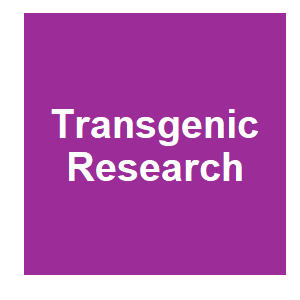
|
Playing God and tampering with nature: popular labels for real concerns in synthetic biologyL. Carter, A. Mankad, E. V. Hobman and N. B. Porter, Transgenic Research, 2021.
We present the findings from a large Australian study (N = 4593) which suggests ‘playing God’ objections and their variants can be multilayered and, at times, accompanied by meaningful information about risk perceptions. We use qualitative analysis of ope Keywords: assessment, drosophila, gene drive synthetic, hybridization, risk, suzukii |

|
RNAi-based products: A sustainable alternative to hazardous pesticidesGhent University, Phys Org, 2021.
RNAi-based biocontrol is a great alternative to hazardous pesticides and can contribute towards reversing the alarming decline in farmland birds and beneficial insects (especially pollinating ones). RNAi is a well-known natural biological process in most Keywords: assessment, drosophila, gene drive synthetic, hybridization, risk, suzukii |

|
Exploring Gene Drive Technologies in Agriculture, Biodiversity and Human DiseaseThe GBIRd Partnership and The GeneConvene Global Collaborative, Gene Drive Research Forum, 2021.
The GBIRd Partnership and The GeneConvene Global Collaborative recently collaborated through The Gene Drive Research Forum, to create and produce an engaging conversation between Drs. Fred Gould and Charles Godfray about gene drive technologies – the potential benefits and ... Keywords: assessment, drosophila, gene drive synthetic, hybridization, risk, suzukii |

|
New GE unintentionally leaves traces in cellsC. Then, Testbiotech, 2020.
A new scientific publication shows that CRISPR/Cas gene scissor applications in animals unintentionally leave traces. The findings are not related to unintended changes in the DNA, which have often been described, but to gene regulation, i.e. epigenetics. The effects are ... Keywords: assessment, drosophila, gene drive synthetic, hybridization, risk, suzukii |

|
Scientists paved the way for field trials of gene-driven organismsK. Winslet, FLORIDA News Times, 2020.
The recent rise of gene drive research, accelerated by CRISPR-Cas9 gene editing technology, has brought about a wave of transformation throughout science.Developed with selected traits that have been genetically engineered to spread throughout the population, Gene Drive ... Keywords: assessment, drosophila, gene drive synthetic, hybridization, risk, suzukii |

|
Technical Support to Burkina Faso on Gene Drive Stage 2 Dossier ReviewAUDA-NEPAD, AUDA-NEPAD, 2020.
AUDA-NEPAD in partnership with the National Biosafety Agency (ANB) in Burkina Faso organised a training workshop to support to the National Biosafety Committee (NBC) on stage 2 dossier review, on December 3 – 5, 2020, in Bobo-Dioulasso, Burkina Faso. In addition to the NBC ... Keywords: assessment, drosophila, gene drive synthetic, hybridization, risk, suzukii |
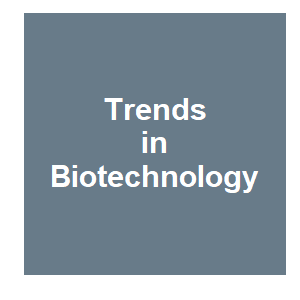
|
Gene Drive-Modified Organisms: Developing Practical Risk Assessment GuidanceY. Devos, M. B. Bonsall, L. G. Firbank, J. Mumford, F. Nogué and E. A. Wimmer, Trends in Biotechnology, 2020.
Risk assessors, risk managers, developers, potential applicants, and other stakeholders at many levels discuss the need for new or further risk assessment guidance for deliberate environmental releases of gene drive-modified organisms. However, preparing useful and practical ... Keywords: assessment, drosophila, gene drive synthetic, hybridization, risk, suzukii |

|
Scientists Set a Path for Field Trials of Gene Drive OrganismsM. Aguilera, UC San Diego News Center, 2020.
The modern rise of gene drive research, accelerated by CRISPR-Cas9 gene editing technology, has led to transformational waves rippling across science. Gene drive organisms (GDOs), developed with select traits that are genetically engineered to spread through a population, have ... Keywords: assessment, drosophila, gene drive synthetic, hybridization, risk, suzukii |

|
Burkina Faso Stakeholders consultations on Gene Drive Technology for integrated vector management towards malaria eliminationAUDA-NEPAD, AUDA-NEPAD, 2020.
Under its flagship Integrated Vector Management (IVM) Programme, African Union Development Agency (AUDA-NEPAD) in partnership with the National biosafety agency (ANB) of Burkina Faso organized an information sharing workshop on the applications of "Gene Drive" technology and ... Keywords: assessment, drosophila, gene drive synthetic, hybridization, risk, suzukii |
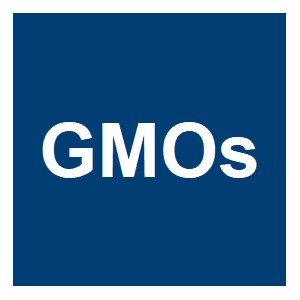
|
Evaluating Gene Drive Approaches for Public BenefitM. R. Santos, GMOs: Implications for Biodiversity Conservation and Ecological Processes, 2020.
Gene drive approaches—those which bias inheritance of a genetic element in a population of sexually reproducing organisms—have the potential to provide important public benefits. The spread of selected genetic elements in wild populations of organisms may help address certain ... Keywords: assessment, drosophila, gene drive synthetic, hybridization, risk, suzukii |

|
Engineered Gene Drives and their Value in the Control of Vector-Borne Diseases, Weeds, Pests, and Invasive SpeciesK. Hefferon and R. Herring, GMOs: Implications for Biodiversity Conservation and Ecological Processes, 2020.
Genetic engineering has created potential for moving medical and agricultural research and application frontiers forward in unprecedented ways. Despite its accepted use as a powerful tool in medical research, genetic modification and genome editing technologies remain ... Keywords: assessment, drosophila, gene drive synthetic, hybridization, risk, suzukii |

|
Engineered Gene Drives: Ecological, Environmental, and Societal ConcernsJ. Kuzma, GMOs: Implications for Biodiversity Conservation and Ecological Processes, 2020.
This chapter overviews the types, purposes, and potential impacts of gene drive organisms (GDOs) and discusses challenges with foreseeing and assessing these impacts prior to their environmental release. It concludes with a few examples of risk analysis methods and governance ... Keywords: assessment, drosophila, gene drive synthetic, hybridization, risk, suzukii |

|
Genetically Engineered Fish: Potential Impacts on Aquaculture, Biodiversity, and the EnvironmentR. A. Dunham and B. Su, GMOs: Implications for Biodiversity Conservation and Ecological Processes, 2020.
Studies on transgenic fish for the aquaculture industry have focused on improving growth rates, enhancing disease resistance, altering body composition, acting as biological factories for medical proteins, and even altering temperature tolerance and coloration. The future impact ... Keywords: assessment, drosophila, gene drive synthetic, hybridization, risk, suzukii |

|
Invasive Species Control and Resolution of Wildlife Damage Conflicts: A Framework for Chemical and Genetically Based Management MethodsL. Clark, J. Eisemann, J. Godwin, K. E. Horak, K. Oh, J. O’Hare, A. Piaggio, K. Pepin and E. Ruell, GMOs: Implications for Biodiversity Conservation and Ecological Processes, 2020.
Vertebrate wildlife damage management relates to developing and employing methods to mitigate against damage caused by wildlife in the areas of food production, property damage, and animal or human health and safety. Of the many management tools available Keywords: assessment, drosophila, gene drive synthetic, hybridization, risk, suzukii |

|
GMOs: Implications for Biodiversity Conservation and Ecological ProcessesChaurasia, Anurag , Hawksworth, David L., Pessoa de Miranda, Manoela., GMOs: Implications for Biodiversity Conservation and Ecological Processes, 2020.
This book covers a broad spectrum of topics related to GMOs and allied new gene-based technologies, biodiversity, and ecosystem processes, bringing together the contributions of researchers and regulators from around the world. The aim is to offer a clear view of the benefits and ... Keywords: assessment, drosophila, gene drive synthetic, hybridization, risk, suzukii |
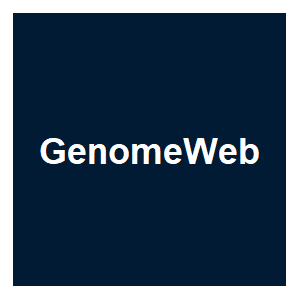
|
FNIH Panel on Gene Drive Regulation Emphasizes Need for Local Community EngagementC. Rizk, GenomeWeb, 2020.
Genetically modified organisms are another topic of deep debate, with some activists agitating for and getting governments to implement deep restrictions on modified crops. More recently, GMO crops have started to regain public favor, particularly in countries where boosting the ... Keywords: assessment, drosophila, gene drive synthetic, hybridization, risk, suzukii |

|
Engineering biological diversity: the international governance of synthetic biology, gene drives, and de-extinction for conservationJ. L. Reynolds, Current Opinion in Environmental Sustainability, 49:1-6. 2020.
In the face of insufficient progress in conserving and restoring biodiversity, the in situ use of advanced genetic modification, gene drives, and other biotechnologies for conservation purposes are being considered, researched, and developed. This paper introduces the methods, ... Keywords: assessment, drosophila, gene drive synthetic, hybridization, risk, suzukii |

|
Further guidance required for assessment of gene drive technology, says EFSAEuractiv, The World News Monitor, 2020.
Existing guidelines are adequate for evaluating risks associated with gene-drive modified insects, but further guidance is needed for some areas, most notably for environmental risk assessments. The evaluation was requested to explore the issue ahead of the consideration of any ... Keywords: assessment, drosophila, gene drive synthetic, hybridization, risk, suzukii |

|
Mutagenic chain reaction cannot be sufficiently controlledChristoph Then, Testbiotech, 2020.
The European Food Safety Authority (EFSA) has published the results of its public consultation on the risks of so-called gene drive organisms. Testbiotech accuses the authority of disguising the real dimension of the risks. Gene drives are designed to spread artificial genetic ... Keywords: assessment, drosophila, gene drive synthetic, hybridization, risk, suzukii |

|
Outcome of a public consultation on the draft adequacy and sufficiency evaluation of existing EFSA guidelines for the molecular characterisation, environmental risk assessment and post-market environmental monitoring of genetically modified insects containing engineered gene drivesEuropean Food Safety Authority, Y. Devos, M. B. Bonsall, F. Nogué, K. Paraskevopoulos, E. A. Wimmer and L. G. Firbank, EFSA Supporting Publications, 17:1939E. 2020.
The European Food Safety Authority (EFSA) carried out an online public consultation to receive input from interested parties/persons on the draftscientific opinion on the adequacy and sufficiencyevaluation of existing guidelines for the molecular characterisation (MC), ... Keywords: assessment, drosophila, gene drive synthetic, hybridization, risk, suzukii |

|
Gene drives, species, and compassion for individuals in conservation biologyY. Rohwer, Ethics, Policy and Environment, 2020.
In this paper I argue that these compassionate conservationists have a moral obligation to support the investigation and development of genetic modification technologies because of their potential to minimize suffering and eliminate killing in conservation. Furthermore, I will ... Keywords: assessment, drosophila, gene drive synthetic, hybridization, risk, suzukii |

|
Novel and Exceptional Technology and Research Advisory Committee – NExTRAC -NIHNIH Office of Science Policy, National Institutes of Health (NIH), 2020.
NExTRAC provides advice to the Director of the National Institutes of Health (NIH) on matters related to the conduct and oversight of research involving emerging technologies in biomedical science. NExTRAC also makes recommendations on research involving the use of, and ... Keywords: assessment, drosophila, gene drive synthetic, hybridization, risk, suzukii |

|
When Extinction is Warranted: Invasive Species, Suppression-Drives, and the Worst-Case ScenarioA. C. Thresher, Ethics, Policy and Environment, 2020.
The focus of this paper is on one such risk ? the danger of a suppression-drive escaping containment and wiping out the target species globally. Here, I argue that in most cases this risk is significant enough to warrant holding off on the technology. In some cases, however, we ... Keywords: assessment, drosophila, gene drive synthetic, hybridization, risk, suzukii |

|
Brave New Planet: Reshaping Nature Through Gene DrivesE. Lander, Brave New Planet, 2020.
A new technology, called gene drives, has the power to spread any genetic instructions you wish across an entire animal or plant species in the wild. It might let us restore ecosystems ravaged by invasive species, or help species adapt to climate change. And, it might save ... Keywords: assessment, drosophila, gene drive synthetic, hybridization, risk, suzukii |

|
The ethical way to alter organismsK. Esvelt, Boston Globe, 2020.
As my colleagues and I first described in 2014, we can use CRISPR genome editing to duplicate the most powerful form of “gene drive,” a ubiquitous natural phenomenon that happens when a genetic change is inherited more frequently than usual. Encode the CRISPR machinery next ... Keywords: assessment, drosophila, gene drive synthetic, hybridization, risk, suzukii |

|
Advances in genetic engineering test democracy’s capacity for good decision-makingN. Kofler and R. Taitingfong, Boston Globe, 2020.
New advances in genetic engineering and their application for environmental conservation and public health are further testing our democracy’s capacity for good decision-making. With minimal public input, the Environmental Protection Agency recently approved the release of ... Keywords: assessment, drosophila, gene drive synthetic, hybridization, risk, suzukii |

|
Research and Innovation for biodiversity: what role for gene drive research?EP Intergroup CCBSD, European Bureau of Conservation and Development, 2020.
This webinar will provide an overview of how gene drive works and the problems it seeks to solve, introduce the most advanced research projects on gene drive in the sector of public health and conservation and present the work that international and European bodies such as WHO, ... Keywords: assessment, drosophila, gene drive synthetic, hybridization, risk, suzukii |

|
Inauguration and first meeting of WA-IVM Technical Working GroupsAUDA-NEPAD, AUDA-NEPAD News, 2020.
African Union Development Agency – NEPAD (AUDA-NEPAD) in collaboration with the West Africa Health Organization (WAHO), the Ministry of Health and the Ministry of Environment in Cote d’Ivoire, organized the inaugural meeting of WA-IVM Technical Working Groups (TWGs) from 24 ... Keywords: assessment, drosophila, gene drive synthetic, hybridization, risk, suzukii |

|
Engineered Gene Drives: Policy and Regulatory Considerations Webinar Series by The GeneConvene Global Collaborative October-December 2020Hector Quemada and David O'Brochta, GeneConvene Global Collaborative, 2020.
In this series of webinars the regulatory and policy challenges of moving new innovative genetic biocontrol products such as gene drive technologies to the field will be featured. Each seminar will be ~60 minutes in length followed by questions and answers. Keywords: assessment, drosophila, gene drive synthetic, hybridization, risk, suzukii |

|
Engineered Gene Drives: Regulatory and Policy Considerations Webinar Series by The GeneConvene Global Collaborative October-December 2020Hector Quemada and David O'Brochta, GeneConvene Global Collaborative, 2020.
This is series of webinars the regulatory and policy challenges of moving new innovative genetic biocontrol products such as gene drive technologies to the field will be featured. Keywords: assessment, drosophila, gene drive synthetic, hybridization, risk, suzukii |

|
ESA Position Statement on the Importance of Continued Innovation in Gene Drive TechnologyEntomological Society of America, Annals of the Entomological Society of America, 2020.
The risks and benefits of GDTs should be considered with the risks and benefits of continuing current pest control interventions, which may be comparatively less effective or pose exposure risks to human health and the environment. Keywords: assessment, drosophila, gene drive synthetic, hybridization, risk, suzukii |

|
GeneConvene Global Collaborative Webinar Series Oct-Dec 2020Hector Quemada and David O'Brochta, GeneConvene Global Collaborative, 2020.
This is series of webinars the regulatory and policy challenges of moving new innovative genetic biocontrol products such as gene drive technologies to the field will be featured. Keywords: assessment, drosophila, gene drive synthetic, hybridization, risk, suzukii |

|
Gene drives: Navigating perils of engineered eradication, with Christoph Then.IEAM Podcast, Integrated Environmental Assessment and Management, 2020.Imagine a world without natural enemies like parasites or deadly pathogens. Where crops grow unfettered by rodent and insect pests. Advances in genetic engineering now hold the possibility to alter genomes at the population level, but is it too good to be true? A critical review ... Keywords: assessment, drosophila, gene drive synthetic, hybridization, risk, suzukii |

|
Risks of releasing gene drives mosquitoes – a possible future scenarioTestbiotech, Testbiotech, 2020.
Genetically engineering the genome of an organism with gene drive means that it will be replicated in every following generation. This allows the altered gene to spread rapidly throughout natural populations, which may be decimated or even eradicated. The video contains both ... Keywords: assessment, drosophila, gene drive synthetic, hybridization, risk, suzukii |

|
Scientists Evaluate Environmental Impacts of Gene Drive OrganismsStaff, American Laboratory, 2020.
Researcher Marion Dolezel, from the Environment Agency Austria, and a team of international scientists published in the open-access journal BioRisk, discuss the potential risks and impacts on the environment. Keywords: assessment, drosophila, gene drive synthetic, hybridization, risk, suzukii |

|
Responsible innovation in biotechnology: Stakeholder attitudes and implications for research policyP. Roberts, J. Herkert and J. Kuzma, Elementa, 2020.
Using a mixed methods approach, we analyzed the attitudes of different biotechnology stakeholders, particularly those working in areas related to genetically modified organisms (GMOs) in agriculture and the environment, towards the principles and practices of RI. Homogenous focus ... Keywords: assessment, drosophila, gene drive synthetic, hybridization, risk, suzukii |
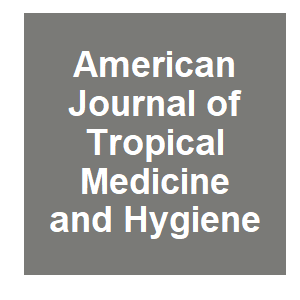
|
Global Governing Bodies: A Pathway for Gene Drive Governance for Vector Mosquito ControlA. Kelsey, D. Stillinger, T. B. Pham, J. Murphy, S. Firth and R. Carballar-Lejarazú, American Journal of Tropical Medicine and Hygiene, 2020.
We examined the current institutions and governing bodies among various continents that could have an impact on gene drive governance or the potential to adapt to its future use. Possible governance strategies also are proposed that seek to bridge gaps and promote an ethically ... Keywords: assessment, drosophila, gene drive synthetic, hybridization, risk, suzukii |
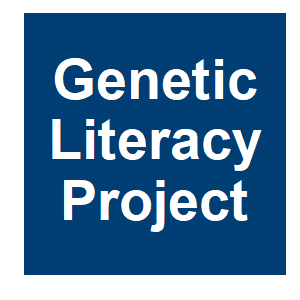
|
Exploring gene drive’s role in fight against malariaJ. Conrow, Genetic Literacy Project, 2020.
J. Conrow (2020) Genetic Literacy Project. An international initiative has formed to ensure that gene drive technology gets a chance to prove its mettle in the quest to control malaria. Keywords: assessment, drosophila, gene drive synthetic, hybridization, risk, suzukii |

|
Efficient population modification gene-drive rescue system in the malaria mosquito Anopheles stephensiA. Adolfi, V. M. Gantz, N. Jasinskiene, H.-F. Lee, K. Hwang, E. A. Bulger, A. Ramaiah, J. B. Bennett, G. Terradas, J. J. Emerson, J. M. Marshall, E. Bier and A. A. James, bioRxiv, 2020.08.02.233056. 2020.
We developed the first recoded gene-drive rescue system for population modification in the malaria vector, Anopheles stephensi, that relieves the load in females caused by integration of the drive into the kynurenine hydroxylase gene by rescuing its function. Non-functional ... Keywords: assessment, drosophila, gene drive synthetic, hybridization, risk, suzukii |

|
Biotechnologies in pest wasp control: taking the sting out of pest management for Māori businesses?S. Palmer and O. R. Mercier, New Genetics and Society, 2020.
A Maori-centered mixed-method study gauged the perceptions of eight Maori businesses about the potential use of five specific new biotechnological controls in pest management. Keywords: assessment, drosophila, gene drive synthetic, hybridization, risk, suzukii |

|
Après les OGM, la nouvelle technique du forçage génétique inquiète écologistes et scientifiquesH. Leussier, Reporterre, 2020.
Les organismes issus du forçage génétique peuvent transmettre, sans autre intervention humaine, des gènes modifiés à tous leurs descendants. Cette technique permettrait d’éradiquer des espèces nuisibles, comme certains moustiques vecteurs de la malaria. Mais des ... Keywords: assessment, drosophila, gene drive synthetic, hybridization, risk, suzukii |
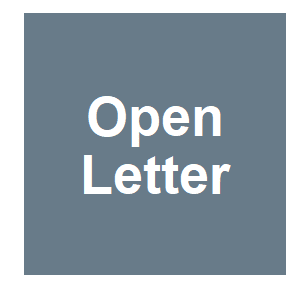
|
Lettre ouverte a Monsieur le Premier Ministre demandant l’interdiction de la production, de l’utilisation et de la dissémination de tout OGM issu du forçage génétiqueA. Bossu, N. Laarman, D. Houdebine, H. Le Meur, F. Jacquemart and F. Warlop, Open Letter, 2020.
A. Bossu, N. Laarman, D. Houdebine, H. Le Meur, F. Jacquemart and F. Warlop (2020). Open Letter. An open letter from French civil society organizations urging the French Parliament to support a resolution at the upcoming Convention on Biodiversity that would call for a ... Keywords: assessment, drosophila, gene drive synthetic, hybridization, risk, suzukii |

|
Release of genetically modified mosquitoes in the Florida Keys put on holdD. Goodhue, Miami Herald, 2020.
Opponents of a plan to release millions of genetically modified mosquitoes in the Florida Keys landed a temporary win on Tuesday. Keywords: assessment, drosophila, gene drive synthetic, hybridization, risk, suzukii |

|
EPA approves field trials of genetically modified mosquitoA. Wernick, WBFO npr, 2020.
The Environmental Protection Agency has given biotech company Oxitec the go-ahead to test the effectiveness of genetically modified mosquitoes in parts of Florida and Texas. Oxitec has been developing genetically modified mosquitoes in hopes of reducing local populations of ... Keywords: assessment, drosophila, gene drive synthetic, hybridization, risk, suzukii |

|
Genome Editing in Food and Farming: Risks and unexpected consequencesJ. Cotter and D. Perls, Canadian Biotechnology Action Network, 2020.
J. Cotter and D. Perls (2020). Canadian Biotechnology Action Network. In this report, we provide an overview of genome editing techniques being explored in agriculture, and the range of potential unexpected effects that can arise from them. The report draws on recent scientific ... Keywords: assessment, drosophila, gene drive synthetic, hybridization, risk, suzukii |

|
Genome Editing 2020: Ethics and Human Rights in Germline Editing in Humans and Gene Drives in MosquitoesG. J. Annas, American Journal of Law and Medicine, 46:143-165. 2020.
G. J. Annas (2020). American Journal of Law and Medicine. doi: 10.1177/0098858820933492. I begin with a discussion of so far disastrously unsuccessful attempts to regulate germline editing in humans, including a summary of the first application of germline genome editing in ... Keywords: assessment, drosophila, gene drive synthetic, hybridization, risk, suzukii |

|
CSOs raise alarm over genetically-engineered mosquitoes in NigeriaA. Oboh, Vanguard, 2020.
No fewer than 75 civil society organisations, CSOs, across the world have raised the alarm over moves to release genetically-modified mosquitoes in Nigeria, noting that the country was about to be used as a guinea pig for the project, which will endanger humans, biodiversity and ... Keywords: assessment, drosophila, gene drive synthetic, hybridization, risk, suzukii |

|
Groups warn against release of genetically-engineered mosquitoes in NigeriaC. Onyesi, Daily Post, 2020.
C. Onyesi (2020). Daily Post. Over 75 Civil Society Organizations from Nigeria, Africa and the world have condemned moves to open the way for the release of genetically modified mosquitoes in Nigeria. Keywords: assessment, drosophila, gene drive synthetic, hybridization, risk, suzukii |

|
Malaria: Over 75 CSOs raise alarm over plans to release nautically engineered mosquitoesNews Agency of Nigeria, WorldStage, 2020.
Mre than 75 Environmental Civil Society Organisations from Nigeria, Africa and other countries have condemned moves to open way for release of genetically modified mosquitoes to control malaria infection. The News Agency of Nigeria (NAN), reports that at a virtual meeting of ... Keywords: assessment, drosophila, gene drive synthetic, hybridization, risk, suzukii |

|
NGOs call for moratorium on controversial ‘gene drive organisms’N. Foote, EURACTIV, 2020.
https://borgenproject.org/3-innovative-technologies-stopping-malaria/ Keywords: assessment, drosophila, gene drive synthetic, hybridization, risk, suzukii |

|
Who is afraid of genetically modified mosquitoes?G. Odogwu, The PUNCH, 2020.
Genetically Modified Organisms have raised concerns in our clime, the same way they have in other countries of the world – where a clear line is drawn between the pro and the anti-GMO citizens. Nonetheless, this modern biotechnological technique is still at its infancy here. As ... Keywords: assessment, drosophila, gene drive synthetic, hybridization, risk, suzukii |

|
Mosquito district workshop focuses on Keys trialsS. Matthis, KEYSWEEKLY, 2020.
Now that the Oxitec “Friendly Mosquito” trials have been approved by the federal and state governments, it’s up to the Florida Keys Mosquito Control District to decide if, when and where to embrace the technology said to decrease the chances of mosquito-borne diseases such ... Keywords: assessment, drosophila, gene drive synthetic, hybridization, risk, suzukii |

|
Genetically modified mosquitoes to be released in Florida and TexasO. Ron, The Jerusalem Post, 2020.
A plan to release 750 million genetically modified mosquitoes in Florida and Texas has been approved, The Guardian reported. According to the plan, the Aedes aegypti mosquitoes will be released into the wild, as they contain a special protein that would kill female offspring, ... Keywords: assessment, drosophila, gene drive synthetic, hybridization, risk, suzukii |

|
Before genetically modified mosquitoes are released, we need a better EPAN. Kofler and J. Kuzma, The Boston Globe, 2020.
While the attention of the American public has rightfully been focused on the COVID-19 pandemic, its associated racial disparities, and broader issues of structural racism, the US government made a serious public health decision — one that could affect our health and our ... Keywords: assessment, drosophila, gene drive synthetic, hybridization, risk, suzukii |

|
Are Genetically Modified Mosquitoes Coming To Florida?M. Taylor, Y100, 2020.
I'm not even going to lie, mosquitoes should be classified under domestic terrorism. The flying, biting bugs you can barely see wreak havoc on my life every single summer. I'm not sure if I'm allergic to them, but whenever I'm bit by them, that area of my skin swells up. It's the ... Keywords: assessment, drosophila, gene drive synthetic, hybridization, risk, suzukii |

|
The Florida Keys are one step closer to getting genetically modified mosquitoesD. Goodhue, Miami Herald, 2020.
An international biotech company is one step closer to being able to release genetically modified mosquitoes in the Florida Keys. The Florida Department of Agriculture and Consumer Services this week granted Oxitec an experimental use permit to release potentially millions of ... Keywords: assessment, drosophila, gene drive synthetic, hybridization, risk, suzukii |

|
Gene Drive Webinars -ENSSER, CSS, VDW and SCEuropean Network of Scientists for Social and Environmental Responsibility, , 2020.
This series of 5 Webinars by some of the authors of the interdisciplinary Gene Drive Report (2019) and were organised by four organisations of independent scientists: the European Network of Scientists for Social and Environmental Responsibility (ENSSER), Critical Scientists ... Keywords: assessment, drosophila, gene drive synthetic, hybridization, risk, suzukii |

|
Species Extinction & the Case for a Global Moratorium on Gene DrivesM. Imken, ARC, 2020.
One million species are currently threatened with extinction, and humanity faces the challenge of stopping the sixth mass extinction in the history of our planet. Yet a new technology called Gene Drive enables human beings to reprogram wild species by genetic engineering and to ... Keywords: assessment, drosophila, gene drive synthetic, hybridization, risk, suzukii |

|
Conservation implications of disease controlJ. C. Buck, S. B. Weinstein, G. Titcomb and H. S. Young, Frontiers in Ecology and the Environment, 6. 2020.
Infectious diseases have indelibly altered human history and, in doing so, have shaped the ecology and conservation of the natural world. Attempts to control diseases often result in adverse environmental impacts, including habitat degradation and unintended outcomes such as ... Keywords: assessment, drosophila, gene drive synthetic, hybridization, risk, suzukii |

|
Gene drives: benefits, risks, and possible applicationsA. Deplazes-Zemp, U. Grossniklaus, F. Lefort, P. Müller, J. Romeis, A. Rüegsegger, N. Schoenenberger and E. Spehn, Swiss Academies Factsheets, 15. 2020.Gene drives are genetic elements that skew the pattern of inheritance of a given characteristic in sexually reproducing organisms. They can be used to spread a characteristic that can alter or even reduce the numbers of individuals in wild populations of a certain species. As ... Keywords: assessment, drosophila, gene drive synthetic, hybridization, risk, suzukii |

|
Genetically modified mosquitoes could be released in Florida and Texas beginning this summer – silver bullet or jumping the gun?B. Allan, C. Stone, H. Tuten, J. Kuzma and N. Kofler, The Conversation, 2020.
On May 1, 2020, the company Oxitec received an experimental use permit from the U.S. Environmental Protection Agency to release millions of GM mosquitoes (labeled by Oxitec as OX5034) every week over the next two years in Florida and Texas. Females of this mosquito species, Aedes ... Keywords: assessment, drosophila, gene drive synthetic, hybridization, risk, suzukii |

|
Gene Drives: Pursuing opportunities, minimizing riskK. L. Warmbrod, A. Kobokovich, R. West, G. Ray, M. Trotochaud and M. Montague, Center for Health Security, 2020.
This study analyzed the current state of gene drive technologies, the ways in which they might be deployed in the field, and the state of regulatory policy governing their development. Keywords: assessment, drosophila, gene drive synthetic, hybridization, risk, suzukii |
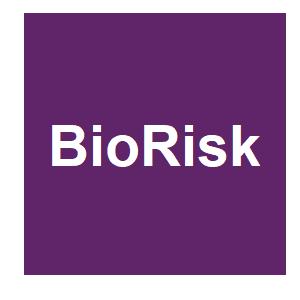
|
Beyond limits – the pitfalls of global gene drives for environmental risk assessment in the European UnionM. Dolezel, C. Lüthi and H. Gaugitsch, BioRisk, 15:1-29. 2020.
We evaluate the novel features of GDOs and outline the resulting challenges for the environmental risk assessment. Keywords: assessment, drosophila, gene drive synthetic, hybridization, risk, suzukii |
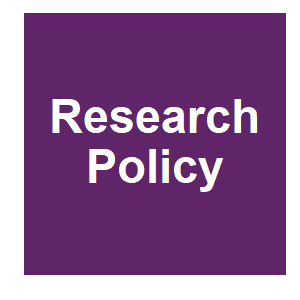
|
The development of complex and controversial innovations. Genetically modified mosquitoes for malaria eradicationV. Cisnetto and J. Barlow, Research Policy, 49:103917. 2020.
e use a longitudinal process approach and qualitative system dynamics modelling to study the development of genetically modified (GM) mosquitoes for malaria eradication in an African country. Keywords: assessment, drosophila, gene drive synthetic, hybridization, risk, suzukii |

|
Pest control with genetically modified insectsmyScience, myScience, 2020.
To control pests without pesticides, genetically modified organisms of the same species could be used. The latter carry a gene that is passed on with above-average frequency via sexual reproduction. This gene possesses traits that directly weaken the pest, or prevent pathogens ... Keywords: assessment, drosophila, gene drive synthetic, hybridization, risk, suzukii |

|
Report of the ad hoc technical expert group on risk assessmentAd Hoc Technical Expert Group on Risk Assessment, Convention on Biological Diversity, 2020.
The Conference of the Parties serving as the meeting of the Parties to the Cartagena Protocol further decided to extend the Online Forum on Risk Assessment and Risk Management to assist the AHTEG and invited submissions of information relevant to the work of the online forum and ... Keywords: assessment, drosophila, gene drive synthetic, hybridization, risk, suzukii |

|
GENE DRIVE ORGANISMS: Implications for the environment and nature conservationM. Dolezel, S. Simon, M. Otto, M. Engelhard and W. Zughart, Umweltbundesamt, 2020.
Recent advances in biotechnology aim at the genetic modification of wild living populations. Some potential applications consider self-propagating genetic elements to generate gene drive organisms (GDOs), also for nature conservation. Due to the potential of GDOs to spread ... Keywords: assessment, drosophila, gene drive synthetic, hybridization, risk, suzukii |

|
Editorial Expression of Concern: Transgenic Aedes aegypti Mosquitoes Transfer Genes into a Natural PopulationB. R. Evans, P. Kotsakiozi, A. L. Costa-Da-Silva, R. S. Ioshino, L. Garziera, M. C. Pedrosa, A. Malavasi, J. F. Virginio, M. L. Capurro and J. R. Powell, Scientific Reports, 10:2. 2020.
Shortly after publication of this Article in September 2019, the Editors were alerted to concerns regarding the interpretation of the data and some of the conclusions. Keywords: assessment, drosophila, gene drive synthetic, hybridization, risk, suzukii |

|
Toward the definition of efficacy and safety criteria for advancing gene drive-modified mosquitoes to field testingS. L. James, J. M. Marshall, G. K. Christophides, F. O. Okumu and T. Nolan, Vector Borne and Zoonotic Diseases, 2020.
Mosquitoes containing gene drive systems are being developed as complementary tools to prevent transmission of malaria and other mosquito-borne diseases. As with any new tool, decision makers and other stakeholders will need to balance risks (safety) and benefits (efficacy) when ... Keywords: assessment, drosophila, gene drive synthetic, hybridization, risk, suzukii |

|
Evaluating the Probability of CRISPR-based Gene Drive Contaminating Another SpeciesV. Courtier-Orgogozo, A. Danchin, P.-H. Gouyon and C. Boëte, Evolutionary Applications, Early Online. 2020.
he probability D that a given CRISPR-based gene drive element contaminates another, non-target species can be estimated by the following Drive Risk Assessment Quantitative Estimate (DRAQUE) Equation: D = (hyb + transf).express.cut.flank.immune.nonextinct with ... Keywords: assessment, drosophila, gene drive synthetic, hybridization, risk, suzukii |

|
Risk assessment challenges of synthetic gene drive organismsE. Sirinathsinghji, TWN Biosafety Briefing, 2020.
The development of gene drive organisms (GDOs) is highly controversial, as illustrated by the intense academic, political and societal debates over their potential deployment for a variety of applications from public health to conservation, agriculture and dual-use technologies. ... Keywords: assessment, drosophila, gene drive synthetic, hybridization, risk, suzukii |

|
Risk assessment challenges of synthetic gene drive organismsE. Sirinathsinghji, TWN Biosafety Briefing, 2020.
Keywords: assessment, drosophila, gene drive synthetic, hybridization, risk, suzukii |
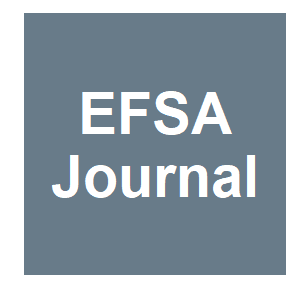
|
What is gene drives about?EFSA, EFSAchannel, 2020.
EFSA expert Les Firbank, specialised in sustainable agriculture, talks about gene drives. Recent development in molecular biology are allowing scientists to engineer gene drives and use them to push desirable genes into target populations. How does that work? Learn more about ... Keywords: assessment, drosophila, gene drive synthetic, hybridization, risk, suzukii |
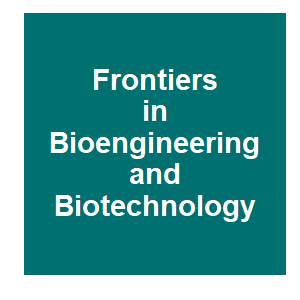
|
Regulation of GM Organisms for Invasive Species ControlH. J. Mitchell and D. Bartsch, Frontiers in Bioengineering and Biotechnology, 7:1-11. 2020.
Invasive species can cause significant harm to the environment, agriculture, and human health, but there are often very limited tools available to control their populations. Gene drives (GD) have been proposed as a new tool which could be used to control or eliminate such ... Keywords: assessment, drosophila, gene drive synthetic, hybridization, risk, suzukii |

|
A typology of community and stakeholder engagement based on documented examples in the field of novel vector controlC. E. Schairer, R. Taitingfong, O. S. Akbari and C. S. Bloss, PLoS Neglected Tropical Diseases, 13:e0007863. 2019.
Background Despite broad consensus on the importance of community and stakeholder engagement (CSE) for guiding the development, regulation, field testing, and deployment of emerging vector control technologies (such as genetically engineered insects), the types of activities ... Keywords: assessment, drosophila, gene drive synthetic, hybridization, risk, suzukii |

|
A cross-sectional survey of biosafety professionals regarding genetically modified insectsO’Brochta, D. A., W. K. Tonui, B. Dass and S. James, Applied Biosafety, 2019:1-9. 2019.
Background:Genetic technologies such as gene editing and gene drive create challenges for existing frameworks used to assess risk and make regulatory determinations by governments and institutions. Insect genetic technologies including transgenics, gene editing, and gene drive ... Keywords: assessment, drosophila, gene drive synthetic, hybridization, risk, suzukii |

|
What risk assessments of genetically modified organisms can learn from institutional analyses of public health risksRajan, S. R. and D. K. Letourneau, Journal of Biomedicine and Biotechnology, 2012:8. 2019.
The risks of genetically modified organisms (GMOs) are evaluated traditionally by combining hazard identification and exposure estimates to provide decision support for regulatory agencies. We question the utility of the classical risk paradigm and discuss its evolution in GMO ... Keywords: assessment, drosophila, gene drive synthetic, hybridization, risk, suzukii |

|
Gene drives in Africa – A PodcastWakeford, T., etc Group, 2019.
In Episode #1 ETC's Tom Wakeford speaks with Ugandan lawyer and advocate Barbara Ntambirweki about gene drives, a powerful new genetic technology that can change species in the wild and make species go extinct. Keywords: assessment, drosophila, gene drive synthetic, hybridization, risk, suzukii |

|
An Initial Framework for the Environmental Risk Assessment of Synthetic Biology-Derived Organisms with a Focus on Gene Drives.W. G. Landis, E. A. Brown and S. Eikenbary, Synthetic Biology 2020: Frontiers in Risk Analysis and Governance. Risk, Systems and Decisions., 2019.
We apply the structure of source-stressor-habitat-effect-impact pathway derived from the relative risk model (Landis and Wiegers 2005) and as was demonstrated to be applicable in the National Academy of Sciences, Engineering and Medicine (NASEM) 2016 report Gene Drives on the ... Keywords: assessment, drosophila, gene drive synthetic, hybridization, risk, suzukii |

|
Gene Drives and new genetic manipulation in agricultureTerra de Direitos, Terra de Direitos, 2019.
Gene drives are forms of genetic editing or manipulation of live organisms. They are the most dangerous forms of transgenics which edit genetic characteristics without necessarily including a new gene, but rather manipulating existing genes of live organisms, i.e. live organism ... Keywords: assessment, drosophila, gene drive synthetic, hybridization, risk, suzukii |
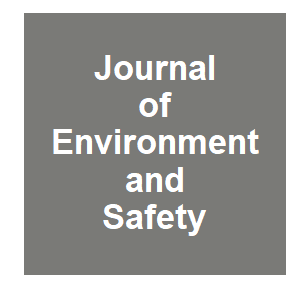
|
Efforts to enhance safety measures for CRISPR/Cas-based gene drive technology in JapanT. Tanaka, N. Tanaka, Y. Nagano, H. Kanuka, D. S. Yamamoto, N. Yamamoto, E. Nanba and T. Nishiuch, Journal of Environment and Safety, 2019.
Gene drive is a powerful system that can spread a desirable genetic trait into an entire species and/or population of a certain region, bypassing Mendelian rules of inheritance. Recently, one of the genome editing technologies, CRISPR/Cas, has been developed, making it easier to ... Keywords: assessment, drosophila, gene drive synthetic, hybridization, risk, suzukii |

|
Gene Drives: Dynamics and Regulatory Matters-A Report from the Workshop “Evaluation of Spatial and Temporal Control of Gene Drives,” April 4-5, 2019, ViennaB. Giese, J. L. Friess, N. H. Barton, P. W. Messer, F. Debarre, M. F. Schetelig, N. Windbichler, H. Meimberg and C. Boete, Bioessays, 41:3. 2019.
Gene Drives are regarded as future tools with a high potential for population control. Due to their inherent ability to overcome the rules of Mendelian inheritance, gene drives (GD) may spread genes rapidly through populations of sexually reproducing organisms. A release of ... Keywords: assessment, drosophila, gene drive synthetic, hybridization, risk, suzukii |

|
Gene Drive Mosquitoes: Ethics, Environment and EfficacyL. Wilburn, ScienceInnovationUnion, 2019.
The Bill and Melinda Gates foundation has recently donated over $75 million to fund gene drive mosquito research by Target Malaria , a consortium that aims to develop technology for malaria control. The first planned release of gene drive mosquitoes is set to happen over the next ... Keywords: assessment, drosophila, gene drive synthetic, hybridization, risk, suzukii |

|
Gene Drive Technologies: Powerful and destructiveSWISSAID, , 2019.
Gene drive organisms can put our environment, food and health in danger: this is made clear by the video from SWISSAID, the Alliance for GMO-free Switzerland and the ETC Group. Keywords: assessment, drosophila, gene drive synthetic, hybridization, risk, suzukii |

|
Transgenic Aedes aegypti Mosquitoes Transfer Genes into a Natural PopulationB. R. Evans, P. Kotsakiozi, A. L. Costa-da-Silva, R. S. Ioshino, L. Garziera, M. C. Pedrosa, A. Malavasi, J. F. Virginio, M. L. Capurro and J. R. Powell, Scientific Reports, 9:6. 2019.
We genotyped the release strain and the target Jacobina population before releases began for >21,000 single nucleotide polymorphisms (SNPs). Genetic sampling from the target population six, 12, and 27-30 months after releases commenced provides clear evidence that portions of the ... Keywords: assessment, drosophila, gene drive synthetic, hybridization, risk, suzukii |
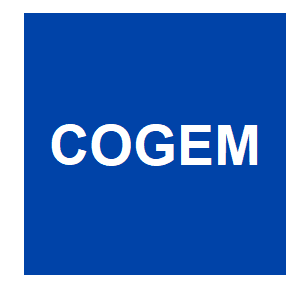
|
Gene Drives: Experience with gene drive systems that may inform an environmental risk assessmentRüdelsheim, PKJS, G., COGEM, 2019.
Gene drives are genetic mechanisms that allow for a trait to be propagated throughout a population; beyond Mendelian inheritance. Active in sexually-reproducing species, they are powerful tools to “drive”; a gene, i.e. increase its frequency, independent of external selection ... Keywords: assessment, drosophila, gene drive synthetic, hybridization, risk, suzukii |

|
Autonomy of Nations and Indigenous Peoples and the Environmental Release of Genetically Engineered Animals with Gene DrivesZ. Meghani, Global Policy, 10:554-568. 2019.
This article contends that the environmental release of genetically engineered (GE) animals with heritable traits that are patented will present a challenge to the efforts of nations and indigenous peoples to engage in self-determination. The environmental release of such animals ... Keywords: assessment, drosophila, gene drive synthetic, hybridization, risk, suzukii |
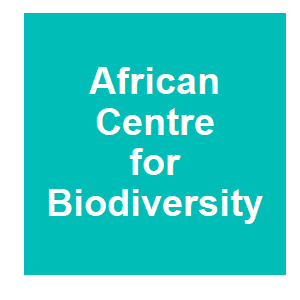
|
Gene drive organisms: What Africa should know about actors, motives and threats to biodiversity and food systemsSirinathsinghji, E., African Centre for Biodiversity., 2019.
In this briefing paper, we set out the key issues that our governments should have addressed with African civil society before endorsing positions and setting the benchmark for Africa-wide policy. In this regard, we point out that, while the impetus for the AU position might well ... Keywords: assessment, drosophila, gene drive synthetic, hybridization, risk, suzukii |

|
An overview of OECD activities related to modern techniques of biotechnology and genome editingKearns, P, Transgenic Research, 28:41-44. 2019.
Since commercial use of genetically-engineered (genetically- modified) plants started in 1996, many agricultural products have been developed to improve crop traits. The foods and feeds derived from these commodities have drastically increased worldwide. However, answering health ... Keywords: assessment, drosophila, gene drive synthetic, hybridization, risk, suzukii |
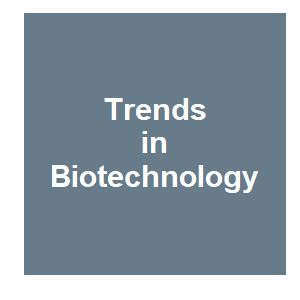
|
Safe CRISPR: Challenges and Possible SolutionsPineda, ML, A.; Collins, J. P.; Kiani, S., Trends in Biotechnology, 37:389-401. 2019.
Applications of CRISPR in human health and in gene drives are at the forefront of biological research as tools. This technology will affect humankind and our environment, so as this technology pushes forward, the design and implementation of safety measures is imperative. Novel ... Keywords: assessment, drosophila, gene drive synthetic, hybridization, risk, suzukii |

|
The EU regulatory framework on genetically modified organisms (GMOs)Bruetschy, C, Transgenic Research, 28:169-174. 2019.
The European Union (EU) legislation on genetically modified organisms (GMOs) aims to ensure a high level of protection for human, animal and environmental health and a well-functioning EU internal market. The framework regulates the release of GMOs into the environment and their ... Keywords: assessment, drosophila, gene drive synthetic, hybridization, risk, suzukii |
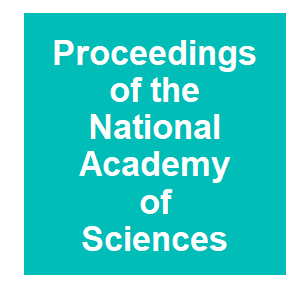
|
Promises and perils of gene drives: Navigating the communication of complex, post-normal scienceBrossard, DB, Pam; Gould, Fred; Wirz, Christopher D., Proceedings of the National Academy of Sciences of the United States of America, 116:7692-7697. 2019.
In November of 2017, an interdisciplinary panel discussed the complexities of gene drive applications as part of the third Sackler Colloquium on “The Science of Science Communication.” The panel brought together a social scientist, life scientist, and journalist to discuss ... Keywords: assessment, drosophila, gene drive synthetic, hybridization, risk, suzukii |

|
Gene drives as a new quality in GMO releases-a comparative technology characterizationFriess, JLvG, A.; Giese, B., Peerj, 7:e6793. 2019.
Compared to previous releases of genetically modified organisms (GMOs) which were primarily plants, gene drives represent a paradigm shift in the handling of GMOs: Current regulation of the release of GMOs assumes that for specific periods of time a certain amount of GMOs will be ... Keywords: assessment, drosophila, gene drive synthetic, hybridization, risk, suzukii |

|
A Question of Consent: Exterminator Mosquitoes in Burkina FasoETC group, , 2019.
Target Malaria’s planned release of GMO mosquitos is step toward release of gene drive mosquitoes, a high-risk technology aimed at the elimination of entire species. Hundreds of organizations have demanded a moratorium on the use of this technology outside of ... Keywords: assessment, drosophila, gene drive synthetic, hybridization, risk, suzukii |

|
Problem formulation for gene drive mosquitoes designed to reduce malaria transmission in Africa: results from four regional consultations 2016–2018Teem, JLA, Aggrey; Glover, Barbara; Ouedraogo, Jeremy; Makinde, Diran; Roberts, Andrew, Malaria Journal, 18:347. 2019.
Gene drive mosquitoes have been proposed as a possible means to reduce the transmission of malaria in Africa. Because this technology has no prior use-history at this time, environmental risk assessments for gene drive mosquitoes will benefit from problem formulation—an ... Keywords: assessment, drosophila, gene drive synthetic, hybridization, risk, suzukii |

|
The Release of Genetically Engineered Mosquitoes in Burkina Faso: Bioeconomy of Science, Public Engagement and Trust in MedicineBeisel, UG, J. K., African Studies Review, 62:164-173. 2019.
Malaria, which is transmitted by mosquitoes, continues to be responsible for a significant number of disease episodes and childhood deaths on the African continent. A variety of mosquito control strategies are currently inplace, but since case numbers are rising again, and drug ... Keywords: assessment, drosophila, gene drive synthetic, hybridization, risk, suzukii |

|
Governing extinction in the era of gene editingMonast, JJ, North Carolina Law Review, 97:1329-1358. 2019.
CRISPR-Cas9 genome-editing technology (“CRISPR”) offers a potential solution for some of the world’s critical conservation challenges. Scientists are harnessing CRISPR to expand genetic diversity of endangered species, control invasive species, or enhance species’ ... Keywords: assessment, drosophila, gene drive synthetic, hybridization, risk, suzukii |

|
Using problem formulation for fit-for-purpose pre-market environmental risk assessments of regulated stressorsDevos, YC, W.; Devlin, R. H.; Ippolito, A.; Leggatt, R. A.; Romeis, J.; Shaw, R.; Svendsen, C.; Topping, C. J., EFSA Journal, 17:e170708. 2019.
Pre-market/prospective environmental risk assessments (ERAs) contribute to risk analyses performed to facilitate decisions about the market introduction of regulated stressors. Robust ERAs begin with an explicit problem formulation, which involves among other steps: (1) formally ... Keywords: assessment, drosophila, gene drive synthetic, hybridization, risk, suzukii |
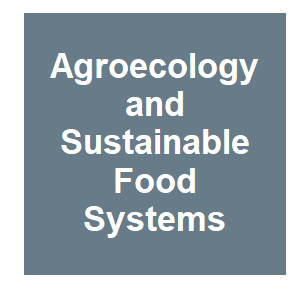
|
Gene driving the farm: who decides, who owns, and who benefits?Montenegro de Wit, M, Agroecology and Sustainable Food Systems, 43:1054-1074. 2019.
This commentary essay explores the social and ecological implications of gene-driving agriculture. Keywords: assessment, drosophila, gene drive synthetic, hybridization, risk, suzukii |
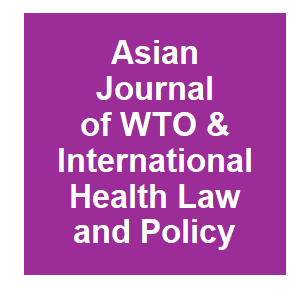
|
Two minutes to midnight-what international law can do about genome editingLee, TL, Asian Journal of Wto & International Health Law and Policy, 14:227-265. 2019.
With its ability to transform the ecosystem, gene drives, a powerful genome-editing technology, poses nuanced regulatory challenges. In particular, as gene drives can override the normal rule of inheritance, where the impacts of gene-drive modified organisms on the environment ... Keywords: assessment, drosophila, gene drive synthetic, hybridization, risk, suzukii |

|
Genetic frontiers for conservation: An assessment of synthetic biology and biodiversity conservationK. H. Redford, T. Brooks, M., B. W. Nicholas and J. S. A. Macfarlane, International Union for Conservation of Nature, 2019.
This assessment is the beginning of a process that will lead to the development of an IUCN policy to guide the Union’s Director General, Commissions, and Members. The draft policy will be discussed in many fora before it is brought to vote at the World Conservation Congress in ... Keywords: assessment, drosophila, gene drive synthetic, hybridization, risk, suzukii |
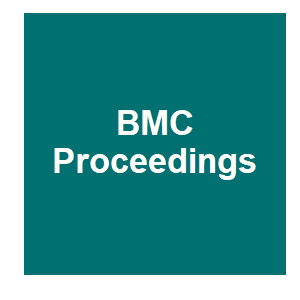
|
An introduction to the proceedings of the environmental release of engineered pests: Building an international governance frameworBrown, Z. S., L. Carter and F. Gould, BMC Proceedings, 12:10. 2018.
In October 2016, a two-day meeting of 65 academic, government and industry professionals was held at North Carolina State University for early-stage discussions about the international governance of gene drives: potentially powerful new technologies that can be used for the ... Keywords: assessment, drosophila, gene drive synthetic, hybridization, risk, suzukii |
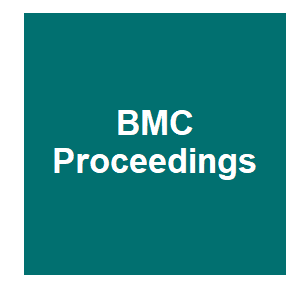
|
Means and ends of effective global risk assessments for genetic pest managementTurner, G., C. Beech and L. Roda, BMC Proceedings, 12:13. 2018.
The development and use of genetic technologies is regulated by countries according to their national laws and governance structures. Legal frameworks require comprehensive technical evidence to be submitted by an applicant on the biology of the organism, its safety to human, ... Keywords: assessment, drosophila, gene drive synthetic, hybridization, risk, suzukii |
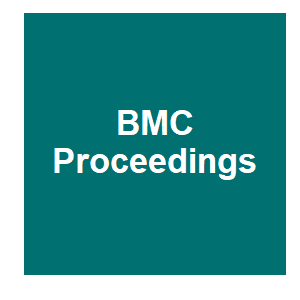
|
Towards inclusive social appraisal: risk, participation and democracy in governance of synthetic biologyStirling, A., K. R. Hayes and J. Delborne, BMC Proceedings, 12:15. 2018.
Frameworks that govern the development and application of novel products, such as the products of synthetic biology, should involve all those who are interested or potentially affected by the products. The governance arrangements for novel products should also provide a ... Keywords: assessment, drosophila, gene drive synthetic, hybridization, risk, suzukii |
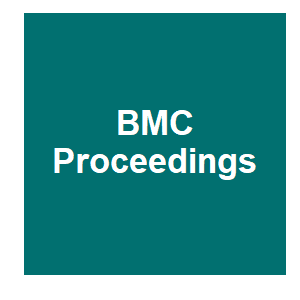
|
GM insect pests under the Brazilian regulatory framework: development and perspectivesAndrade, P. P., M. A. da Silva Ferreira, M. S. Muniz and A. de Casto Lira-Neto, BMC Proceedings, 12:15. 2018.
The emergence of new technologies for genetic modification has broadened the range of possible new products. The regulations of many countries that could benefit from these new products may not be prepared to assess risks and enable science-based decision-making. This is ... Keywords: assessment, drosophila, gene drive synthetic, hybridization, risk, suzukii |
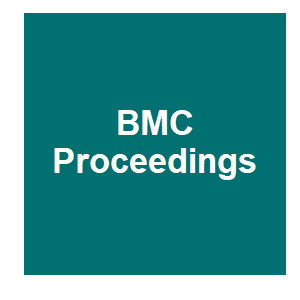
|
Regulation of emerging gene technologies in IndiaAhuja, V., BMC Proceedings, 12:14. 2018.
In India, genetically modified organisms (GMOs) and the products thereof are regulated under the “Rules for the manufacture, use, import, export & storage of hazardous microorganisms, genetically engineered organisms or cells, 1989” (referred to as Rules, 1989) notified under ... Keywords: assessment, drosophila, gene drive synthetic, hybridization, risk, suzukii |
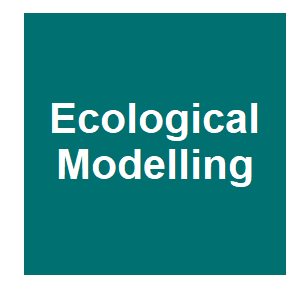
|
A spatially discrete, integral projection model and its application to invasive carpR. A. Erickson, E. A. Eager, P. M. Kocovsky, D. C. Glover, J. L. Kallis and K. R. Long, Ecological Modelling, 387:163-171. 2018.
Natural resource managers and ecologists often desire an understanding of spatial dynamics such as migration, dispersion, and meta-population dynamics. Network-node models can capture these salient features. Additionally, the state-variable used with many species may be ... Keywords: assessment, drosophila, gene drive synthetic, hybridization, risk, suzukii |

|
The ethical implications of population suppression and the irreversibility of gene drivesJ. Kim, International Journal of Life Sciences Research, 2018.
This paper aims to examine the current situation by presenting important ethical arguments that include Chardin’s principle of irreversibility and Weiss’ beliefs on intergenerational equity, ideals upheld by the United Nations Keywords: assessment, drosophila, gene drive synthetic, hybridization, risk, suzukii |

|
Gene Drives – Wundermittel? Biowaffe?Swiss Academy of Sciences SCNAT, Swiss Academy of Sciences, 2018.
Gene drives are genetic elements that skew the pattern of inheritance of a given characteristic in sexually reproduc- ing organisms. They can be used to spread a characteristic that can alter or even reduce the numbers of individuals in wild populations of a certain species. Keywords: assessment, drosophila, gene drive synthetic, hybridization, risk, suzukii |
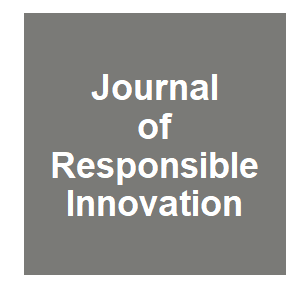
|
Gene drives and the management of agricultural pestsR. F. Medina, Journal of Responsible Innovation, 5:S255-S262. 2018.
Like all pest control strategies, gene drives are not hazard-free. Ecological risk assessment of gene drives designed to control agricultural pests should be conducted before their deployment. The present commentary provides some thoughts on some of the issues one should consider ... Keywords: assessment, drosophila, gene drive synthetic, hybridization, risk, suzukii |

|
SummaryCommittee on Gene Drive Research in Non-Human Organisms: Recommendations for Responsible, Journal of Responsible Innovation, 5:S243-S254. 2018.
Scientists have studied gene drives for more than 50 years. The development of a powerful genome editing tool in 2012, CRISPR/Cas9,1 led to recent breakthroughs in gene drive research that built on that half century’s worth of knowledge, and stimulated new discussion of the ... Keywords: assessment, drosophila, gene drive synthetic, hybridization, risk, suzukii |
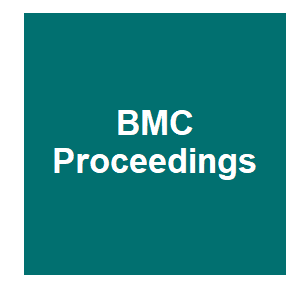
|
Means and ends of effective global risk assessments for genetic pest managementTurner, GB, Camilla; Roda, Lucia, BMC Proceedings, 12:13. 2018.
The development and use of genetic technologies is regulated by countries according to their national laws and governance structures. Legal frameworks require comprehensive technical evidence to be submitted by an applicant on the biology of the organism, its safety to human, ... Keywords: assessment, drosophila, gene drive synthetic, hybridization, risk, suzukii |

|
Development of community of practice to support quantitative risk assessment for synthetic biology products: contaminant bioremediation and invasive carp control as casesTrump, BF, C.; Rycroft, T.; Wood, M. D.; Bandolin, N.; Cains, M.; Cary, T.; Crocker, F.; Friedenberg, N. A.; Gurian, P.; Hamilton, K.; Hoover, J.J.; Meyer, C.; Pokrzywinski, K.; Ritterson, R.; Schulte, P.; Warner, C. ; Perkins, E.; Linkov, I., Environmental Systems and Decisions, 38:517-527. 2018.
Synthetic biology has the potential for a broad array of applications. However, realization of this potential is challenged by the paucity of relevant data for conventional risk assessment protocols, a limitation due to to the relative nascence of the field, as well as the poorly ... Keywords: assessment, drosophila, gene drive synthetic, hybridization, risk, suzukii |
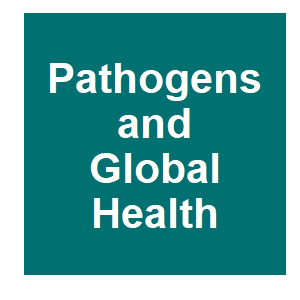
|
Developing standard operating procedures for gene drive research in disease vector mosquitoesZ. N. Adelman, D. Pledger and K. M. Myles, Pathogens and Global Health, 111:436-447. 2018.
Here we discuss information to be considered by principal investigators, biosafety officers, and institutional biosafety committees as they work together to develop SOPs for experiments involving gene drive in arthropods, and describe various courses of action that can be used ... Keywords: assessment, drosophila, gene drive synthetic, hybridization, risk, suzukii |
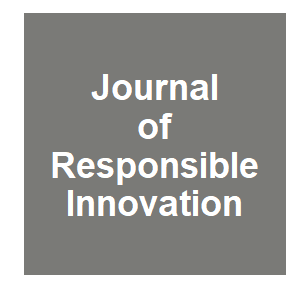
|
Identifying and detecting potentially adverse ecological outcomes associated with the release of gene-drive modified organismsHayes, KRH, G. R.; Dana, G. V.; Foster, S. D.; Ford, J. H.; Thresher, R.; Ickowicz, A.; Peel, D.; Tizard, M.; De Barro, P.; Strive, T.; Dambacher, J. M., Journal of Responsible Innovation, 5:S139-S158. 2018.
Synthetic gene drives could provide new solutions to a range of old problems such as controlling vector-borne diseases, agricultural pests and invasive species. In this paper, we outline methods to identify hazards and detect potentially adverse ecological outcomes at the ... Keywords: assessment, drosophila, gene drive synthetic, hybridization, risk, suzukii |

|
THE NATIONAL BIOSAFETY TECHNICAL COMMISSION (CTNBio) NORMATIVE RESOLUTION No. 16, OF JANUARY 15, 2018CTNBio, National Biosafety Technical Commission of Brasil, 2018.
Sets forth the technical requirements for submitting an inquiry to the CTNBio concerning Precision Breeding Innovation Techniques. THE NATIONAL BIOSAFETY TECHNICAL COMMISSION (CTNBio), using its legal and regulatory powers and in observance of sections XV and XVI of article 14 of ... Keywords: assessment, drosophila, gene drive synthetic, hybridization, risk, suzukii |

|
Editing nature: Local roots of global governanceKofler, NC, James P.; Kuzma, Jennifer; Marris, Emma; Esvelt, Kevin; Nelson, Michael Paul; Newhouse, Andrew; Rothschild, Lynn J.; Vigliotti, Vivian S.; Semenov, Misha; Jacobsen, Rowan; Dahlman, James E.; Prince, Shannon; Caccone, Adalgisa; Brown, Timothy; Schmitz, Oswald J., Science, 362:527. 2018.
The end of malaria. Restored island habitats. Resiliency for species threatened by climate change. Many envisioned environmental applications of newly developed gene-editing techniques such as CRISPR might provide profound benefits for ecosystems and society. But depending on the ... Keywords: assessment, drosophila, gene drive synthetic, hybridization, risk, suzukii |

|
Gene Drives Can Wipe Out Entire Species… Or Save ThemGizmodo, , 2017.
Bill Gates and other investors have poured millions into gene drives. So what is the technology and why are scientists worried about it? Keywords: assessment, drosophila, gene drive synthetic, hybridization, risk, suzukii |

|
Informed consent in field trials of gene-drive mosquitoesP. A. Kolopack and J. V. Lavery, Gates Open Research, 2017.
We argue that informed consent from individual research participants in gene drive trials may be required: (1) when blood and other forms of clinical data are collected from them, as will likely be the case in some studies involving epidemiological endpoints, such as the ... Keywords: assessment, drosophila, gene drive synthetic, hybridization, risk, suzukii |

|
Report of the ad hoc technical expert group on synthetic biologyAd Hoc Technical Working Group, Convention on Biological Diversity, 2017.
In decision XIII/17, the Conference of the Parties to the Convention on Biological Diversity commended the work of the online forum and the Ad Hoc Technical Expert Group on Synthetic Biology (AHTEG) and welcomed the conclusions and recommendations of the report of the AHTEG as a ... Keywords: assessment, drosophila, gene drive synthetic, hybridization, risk, suzukii |

|
Conservation demands safe gene driveK. M. Esvelt and N. J. Gemmell, PLOS Biology, 15:e2003850. 2017.
Here, we explore the risk of accidental spread posed by self-propagating gene drive technologies, highlight new gene drive designs that might achieve better outcomes, and explain why we need open and international discussions concerning a technology that could have global ... Keywords: assessment, drosophila, gene drive synthetic, hybridization, risk, suzukii |
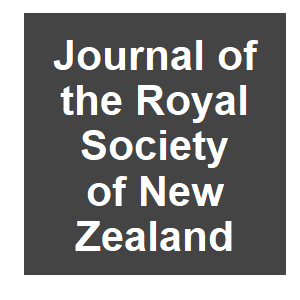
|
The potential for the use of gene drives for pest control in New Zealand: a perspectiveP. K. Dearden, N. J. Gemmell, O. R. Mercier, P. J. Lester, M. J. Scott, R. D. Newcomb, T. R. Buckley, J. M. E. Jacobs, S. G. Goldson and D. R. Penman, Journal of the Royal Society of New Zealand, 48:225-244. 2017.
Here we describe the current state of gene drive technologies and present a series of examples to examine the potential benefits and problems arising from gene drive approaches for pest control in New Zealand. Keywords: assessment, drosophila, gene drive synthetic, hybridization, risk, suzukii |

|
Using CRISPR-based gene drive for agriculture pest controlV. Courtier-Orgogozo, B. Morizot and C. Boëte, EMBO Reports, 18:1481. 2017.
The authors respond to comments to their publication 10.15252/embr.201744205 Keywords: assessment, drosophila, gene drive synthetic, hybridization, risk, suzukii |

|
ASSEMBLY OF THE UNION Twenty-Ninth Ordinary Session: DECISIONS, DECLARATIONS AND RESOLUTIONAfrican Union, African Union, 2017.
Assembly/AU/Dec.649(XXIX): COMMITS to sustain the gains made in the fight against Malaria and monitor antimalarial drug resistance and insecticide resistance; COMMITS ALSO to invest in the development and regulation of the gene-drive technology as well as other new innovations ... Keywords: assessment, drosophila, gene drive synthetic, hybridization, risk, suzukii |

|
Open until dangerous: gene drive and the case for reforming research to reduceK. Esvelt, N. Labenz, G. Church, Centre for Effective Altruism, 2017.
The wisdom with which we develop and deploy new technologies will define the future of our civilization. Why do we conduct reseearch in small teams of specialists who cannot reliably anticipate consequences on their own? Might it be better to share our best ideas and plans with ... Keywords: assessment, drosophila, gene drive synthetic, hybridization, risk, suzukii |

|
The use of gene editing to create gene drives for pest control in New ZealandRoyal Society Te Apārangi Gene Editing Panel, Royal Society of New Zealand, 2017.
to explore the implications of gene editing technology for New Zealand, the Royal Society Te Apārangi has convened a multidisciplinary panel of some of New Zealand’s leading experts to consider the social, cultural, legal and economic implications of revolutionary ... Keywords: assessment, drosophila, gene drive synthetic, hybridization, risk, suzukii |

|
Agricultural pest control with CRISPR-based gene drive: time for public debateV. Courtier-Orgogozo, B. Morizot and C. Boëte, EMBO Reports, 18:878-880. 2017.
Gene drive technology to control disease vectors or pests has great potential for addressing humanitarian and public health problems. Its application for pest control in agriculture, however, raises important environmental, social and ethical issues. Keywords: assessment, drosophila, gene drive synthetic, hybridization, risk, suzukii |

|
SCIENTIFIC OPINION: In response to the referral of 12 October 2015 concerning use of genetically modified mosquitoes for vector controlHigh Council for Biotechnology, High Council for Biotechnology (France), 2017.
The Scientific Committee’s opinion describes emerging vector control techniques using GM mosquitoes, the current state of research into and development of these techniques and the outcomes of initial experiments worldwide. To date, only one technique has been developed to an ... Keywords: assessment, drosophila, gene drive synthetic, hybridization, risk, suzukii |

|
Genome editing: scientific opportunities, public interests and policy options in the European UnionEASAC, European Academies Science Advisory Council, 2017.
In many of the areas in which EASAC, the European Academies’ Science Advisory Council, works, where a large and solid body of knowledge is needed to inform the action of our societies, it is important to recognise that there is an intimate mix of science and values involved in ... Keywords: assessment, drosophila, gene drive synthetic, hybridization, risk, suzukii |

|
Daisyfield gene drive systems harness repeated genomic elements as a generational clock to limit spreadJ. Min, C. Noble, D. Najjar and K. M. Esvelt, bioRxiv, 104877. 2017.
Here we describe a novel form of gene drive based on the introduction of multiple copies of an engineered ‘daisy’ sequence into repeated elements of the genome. Each introduced copy encodes guide RNAs that target one or more engineered loci carrying the CRISPR nuclease gene ... Keywords: assessment, drosophila, gene drive synthetic, hybridization, risk, suzukii |

|
Principles for gene drive researchEmerson, CJ, Stephanie; Littler, Katherine; Randazzo, Filippo, Science, 358:1135. 2017.
The recent outbreak of Zika virus in the Americas renewed attention on the importance of vector-control strategies to fight the many vector-borne diseases that continue to inflict suffering around the world. In 2015, there were ?212 million infections and a death every minute ... Keywords: assessment, drosophila, gene drive synthetic, hybridization, risk, suzukii |
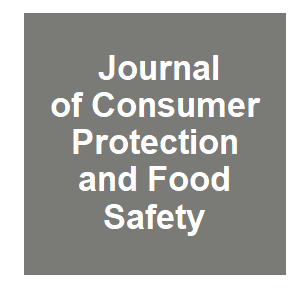
|
Gene drives do not always increase in frequency: from genetic models to risk assessmentde Jong, TJ, Journal Fur Verbraucherschutz Und Lebensmittelsicherheit-Journal of Consumer Protection and Food Safety, 12:299-307. 2017.
Homing genes encode endonucleases that make a double stranded break in the DNA, destroying a target site on the homologous chromosome. When the cell repairs the break the homing allele is copied, converting a heterozygote into a homozygote. This results in gene drive (GD), an ... Keywords: assessment, drosophila, gene drive synthetic, hybridization, risk, suzukii |

|
Agricultural pest control with CRISPR-based gene drive: time for public debate: Should we use gene drive for pest control?Courtier?Orgogozo, VM, Baptiste; Boëte, Christophe, EMBO Reports, 18:878-880. 2017.
Gene drive based on the CRISPR/Cas-9 gene editing system is a powerful technology that promotes the inheritance of the gene drive tool itself via sexual reproduction and can therefore spread quickly through a population. It holds great potential for public health and humanitarian ... Keywords: assessment, drosophila, gene drive synthetic, hybridization, risk, suzukii |

|
Unintended consequences of 21st century technology for agricultural pest managementYoung, SL, EMBO reports, 18:1478-1478. 2017.
Comment on Agricultural pest control with CRISPR-based gene drive: time for public debate by Courtier-Orgogozo et al. Keywords: assessment, drosophila, gene drive synthetic, hybridization, risk, suzukii |

|
Guidance on risk assessment of living modified organisms and monitoring in the context of risk assessmentAd Hoc Technical Expert Group (AHTEG) on Risk Assessment and Risk Management,, Convention on Biological Diversity, 2016.
This document was developed by the Ad Hoc Technical Expert Group (AHTEG) on Risk Assessment and Risk Management, with input from the Open-ended Online Expert Forum, in accordance with terms of reference set out by the Conference of the Parties serving as the meeting of the ... Keywords: assessment, drosophila, gene drive synthetic, hybridization, risk, suzukii |

|
Biodiversity, GMOs, Gene Drives and the Militarised MindShiva, V, Inter Press Service, 2016.
A recent report from the National Academy of Science of The United States, titled Gene Drives on the Horizon : Advancing Science, Navigating Uncertainty, and Aligning Research with Public Values”, warns:; “One possible goal of release of a gene-drive modified organism is to ... Keywords: assessment, drosophila, gene drive synthetic, hybridization, risk, suzukii |

|
Science and Technology Committee Genetically Modified InsectsUK Parliament, UK Parliament, 2015.
The UK is a world leader in the development of this technology. The European Union’s regulatory process, however, is likely to hold back progress. There is a moral duty to test the potential of the technology. We therefore support further research and call for action to test ... Keywords: assessment, drosophila, gene drive synthetic, hybridization, risk, suzukii |

|
CRISPR-Cas9: Gene Drive SafeguardsWyss Institute, Harvard University, 2015.
In this animation, learn how effective safeguarding mechanisms developed at the Wyss Institute and Harvard Medical School can be applied to ensure gene drive research is done responsibly in the laboratory. These safeguards enable responsible scientific investigation into how gene ... Keywords: assessment, drosophila, gene drive synthetic, hybridization, risk, suzukii |

|
CRISPR-Cas9: Safeguarding Gene DrivesHarvard University, , 2015.
In this animation, learn how effective safeguarding mechanisms developed at the Wyss Institute and Harvard Medical School can be applied to ensure gene drive research is done responsibly in the laboratory. These safeguards enable responsible scientific investigation into how gene ... Keywords: assessment, drosophila, gene drive synthetic, hybridization, risk, suzukii |

|
Biosafety for human health and the environment in the context of the potential use of genetically modified mosquitoes (GMMs)WHO/TDR, WHO/TDR Training Manual, 2015.
This Training manual: Biosafety for human health and the environment in the context of the potential use of genetically modified mosquitoes (GMMs) is based on biosafety training courses on GMMs undertaken in Africa, Asia and Latin America from 2008–2011. The courses were ... Keywords: assessment, drosophila, gene drive synthetic, hybridization, risk, suzukii |

|
Guidance framework for testing of genetically modified mosquitoesWHO, WHO-TDR, 2014.
As the research progresses, a need has been expressed both within the scientific community and by the public for additional standards and guidance. WHO-TDR and the Foundation for the National Institutes of Health (FNIH) co-sponsored a technical consultation meeting in 2009 to ... Keywords: assessment, drosophila, gene drive synthetic, hybridization, risk, suzukii |

|
Guidance on the environmental risk assessment of genetically modified animalsEuropean Food Safety Authority, European Food Safety Authority, 2013.
This document describes the six sequential steps for the ERA of GM animals, as indicated in Directive 2001/18/EC: (1) problem formulation including hazard and exposure identification; (2) hazard characterisation; (3) exposure characterisation; (4) risk characterisation; (5) risk ... Keywords: assessment, drosophila, gene drive synthetic, hybridization, risk, suzukii |

|
Ethical issues in field trials of genetically modified disease-resistant mosquitoesD. B. Resnik, Developing World Bioethics, 14:37-46. 2012.
Mosquito-borne diseases take a tremendous toll on human populations, especially in developing nations. In the last decade, scientists have developed mosquitoes that have been genetically modified to prevent transmission of mosquito-borne diseases, and field trials have been ... Keywords: assessment, drosophila, gene drive synthetic, hybridization, risk, suzukii |

|
Progress and prospects for the use of genetically modified mosquitoes to inhibit disease transmissionA. A. James, J. D. Mumford, S. L. James and Y. T. Touré, WHO/TDR, 2010.
The use of genetically modified mosquitoes (GMMs) for disease control has social, economic and ethical implications, so it is important that the World Health Organization (WHO) and its partners provide guidance to countries on these issues. In collaboration with the Foundation ... Keywords: assessment, drosophila, gene drive synthetic, hybridization, risk, suzukii |

|
Problem formulation in the environmental risk assessment for genetically modified plantsWolt, JDK, Paul; Raybould, Alan; Fitzpatrick, Julie W.; Burachik, Moisés; Gray, Alan; Olin, Stephen S.; Schiemann, Joachim; Sears, Mark; Wu, Felicia, Transgenic Research, 19:425-436. 2010.
Problem formulation is the first step in environmental risk assessment (ERA) where policy goals, scope, assessment endpoints, and methodology are distilled to an explicitly stated problem and approach for analysis. The consistency and utility of ERAs for genetically modified (GM) ... Keywords: assessment, drosophila, gene drive synthetic, hybridization, risk, suzukii |

|
Use of Genetically Engineered Fruit Fly and Pink Bollworm in APHIS Plant Pest Control Programs: Final Environmental Impact Statement—October 2008USDA/APHIS, USDA/APHIS, 2008.
The U.S. Department of Agriculture (USDA), Animal and Plant Health Inspection Service (APHIS), in cooperation with several States and foreign countries, is proposing further development of genetically engineered fruit fly species and pink bollworm for use in various applications ... Keywords: assessment, drosophila, gene drive synthetic, hybridization, risk, suzukii |

|
Malaria Control with Genetically Manipulated Insect VectorsL. Alphey, C. B. Beard, P. Billingsley, M. Coetzee, A. Crisanti, C. Curtis, P. Eggleston, C. Godfray, J. Hemingway, M. Jacobs-Lorena, A. A. James, F. C. Kafatos, L. G. Mukwaya, M. Paton, J. R. Powell, W. Schneider, T. W. Scott, B. Sina, R. Sinden, S. Sink, Science, 298:119. 2002.
At a recent workshop, experts discussed the benefits, risks, and research priorities associated with using genetically manipulated insects in the control of vector-borne diseases. Keywords: assessment, drosophila, gene drive synthetic, hybridization, risk, suzukii |

Contact
David O’Brochta
Foundation for the
National Institutes of Health
geneconvenevi@fnih.org
RSS

